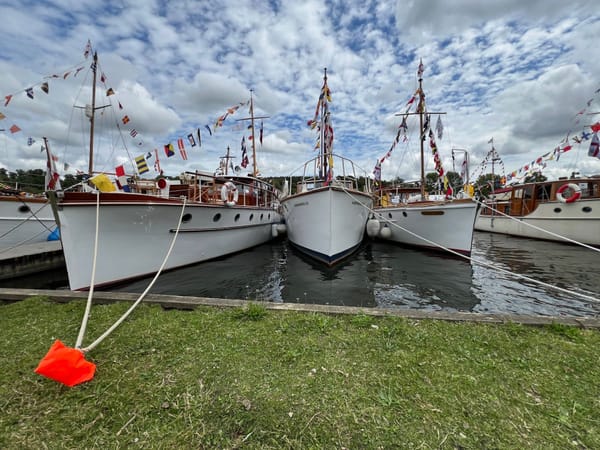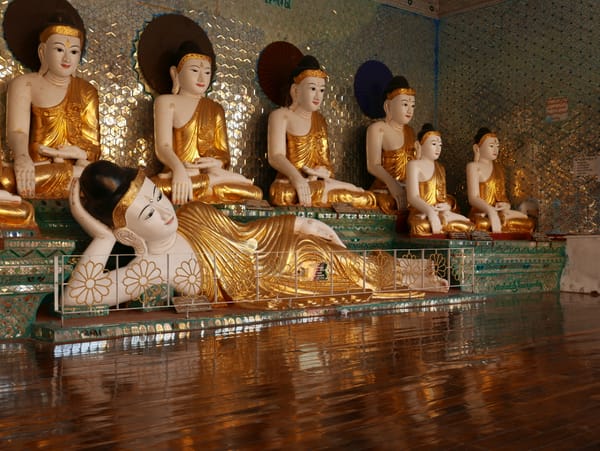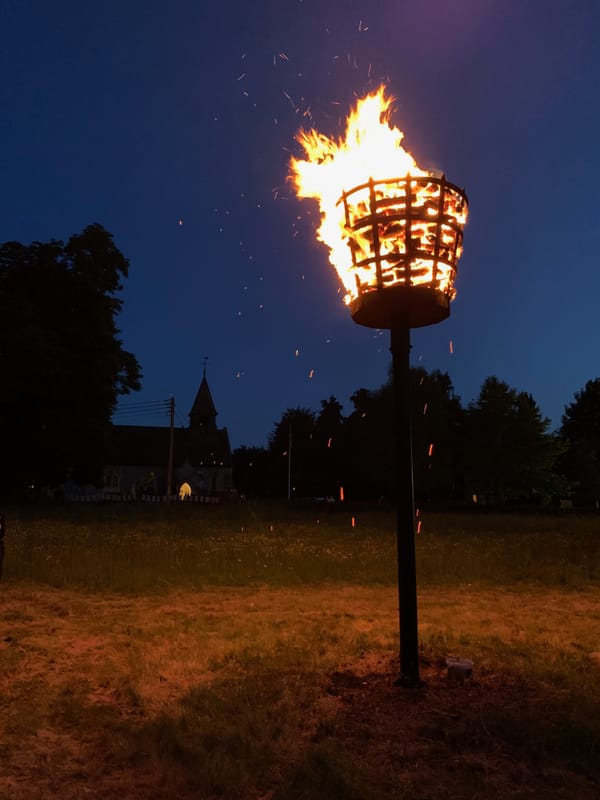Bali — Tanah Lot, Bali, Indonesia
A very busy tourist attraction
August 2015
At the end of my first full day in Bali, I went to Tanah Lot, where I’d heard you could see a spectacular sunset over the sea.
Tanah Lot was about an hour and ten minutes from Ubud. The place had a market area with several designer shops, local traders, temples, and spectacular views out to sea. The entry cost is 20,000 Indonesian Rupiah (£1 GBP; $1.50 USD).
A local legend tells of the formation of Tanah Lot.
A Hindu priest, “Dang Hyang Dwi Jendra” (or "Dang Hyang Nirartha”), also called “Tuan Semeru” (the teacher from Semeru (Semeru is a volcano in East Java)), came to Bali in the 15th century during the reign of “Dalem Waturenggong” to extend the teaching of Hinduism to the area. He journeyed west to east along the southern coast of Bali and made his first stop in Rambut Siwi to perform “Dharma Yatra” (meditation). During his meditation, he saw a ray of light that led to a holy spring, and nearby he made a place to meditate — “Gili Beo” (rock bird).
Dang Hyang Dwi Jendra continued east along the coast and stopped at Beraban Village, where he successfully converted most villagers to Hinduism. However, the “Bendesa Sakti Beraban” (village head) refused to convert and managed to raise a group of followers to chase the priest out of the village. The local legend states that the priest protected himself by moving the rock on which he sat to become a small floating island off the coast, which became “Tanah Lot” (earth sea). This act finally persuaded the village head to convert to Hinduism.
When you arrive at Tanah Lot, you are dropped off in the car park; the first thing you see is a rather excellent doorway.
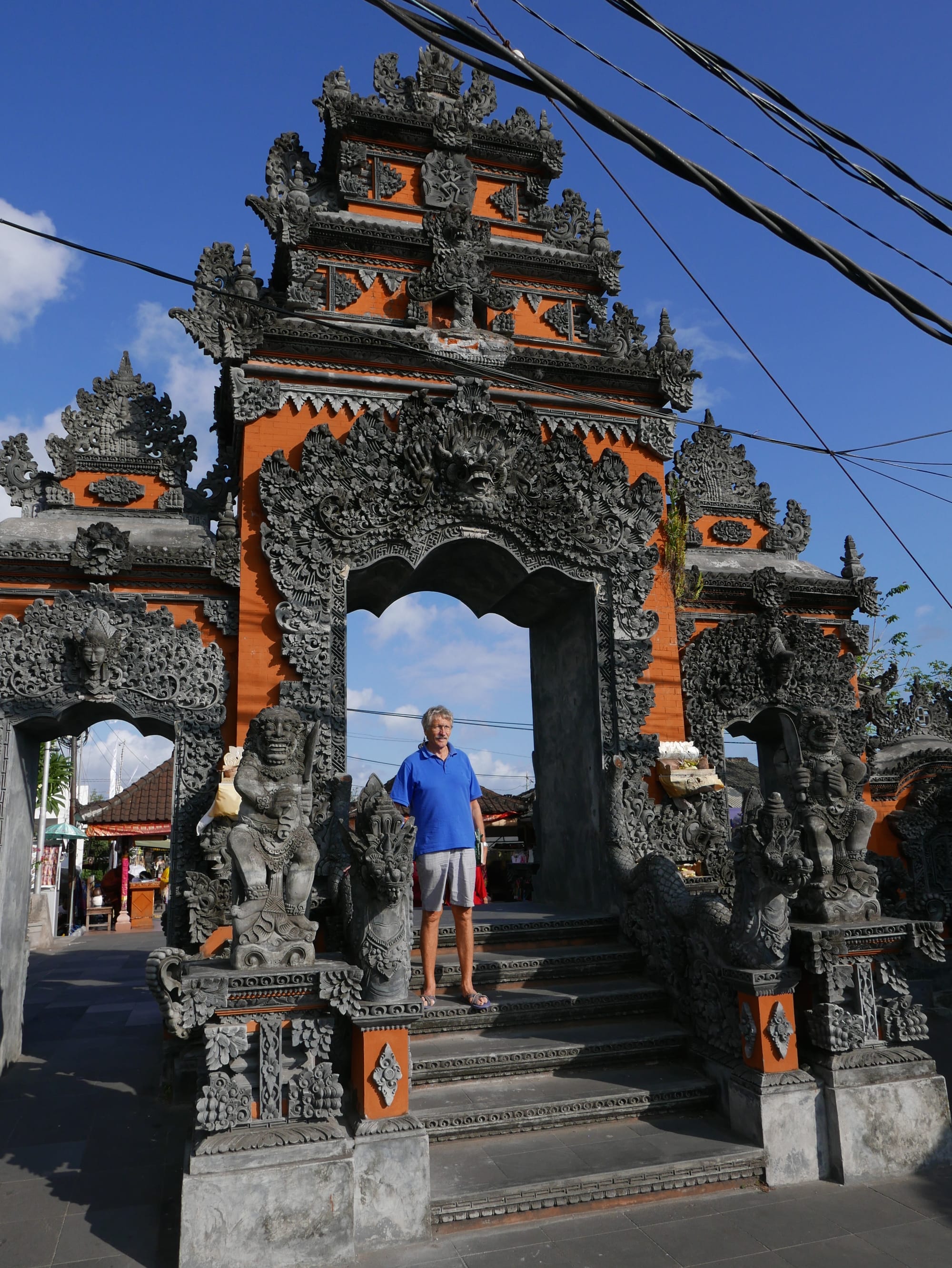
The stone carving on the doorway was spectacular, and it is worth stopping to take a look.
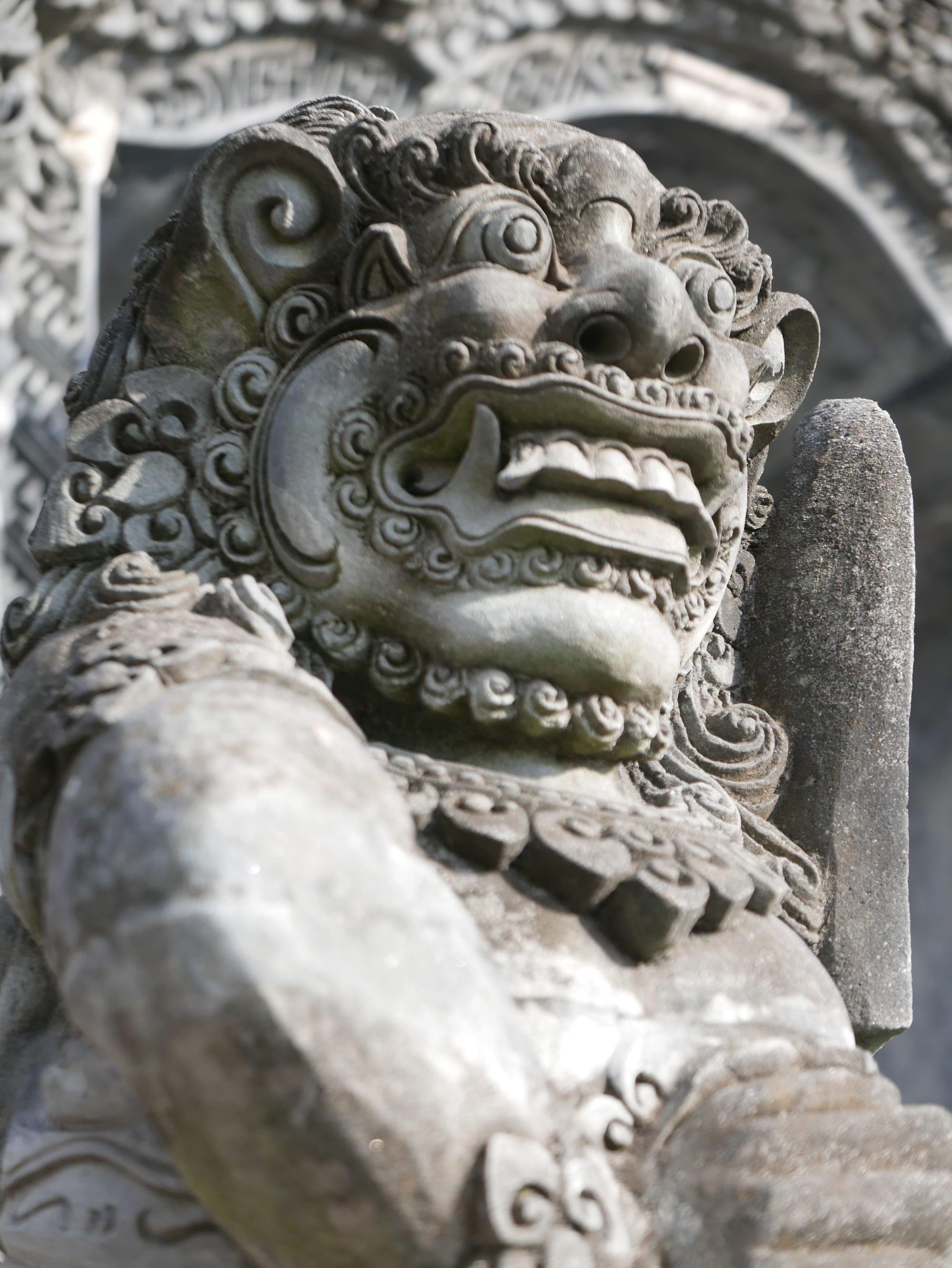
You walk through a large market area to get to the main beach and temple complex. The market was full of shops selling local trinkets, touristy-type things and some big-name brand stores. There was also a rather extensive “art market” in one section. The place was busy.
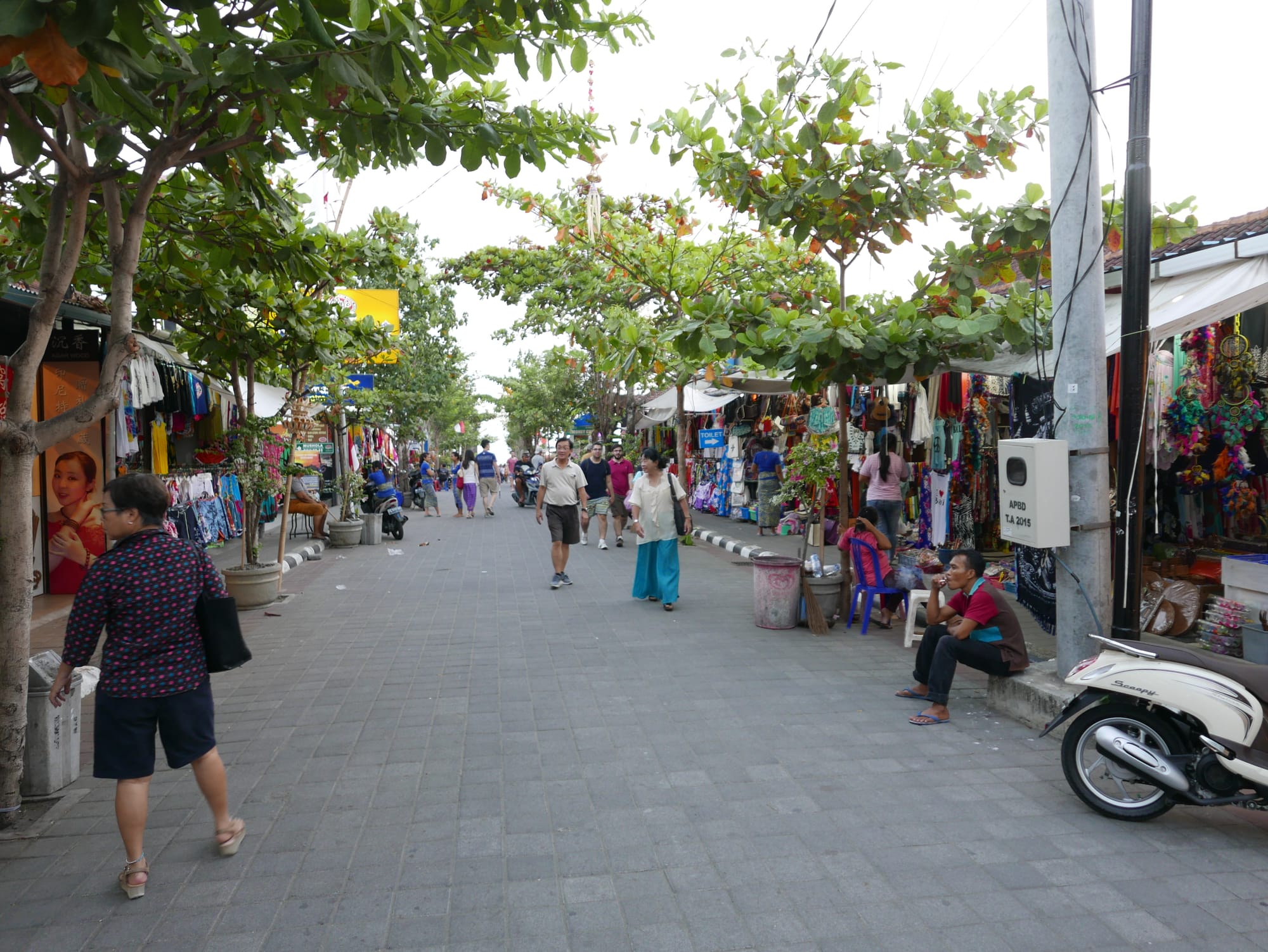

As you approach the beach, you encounter this gentleman.
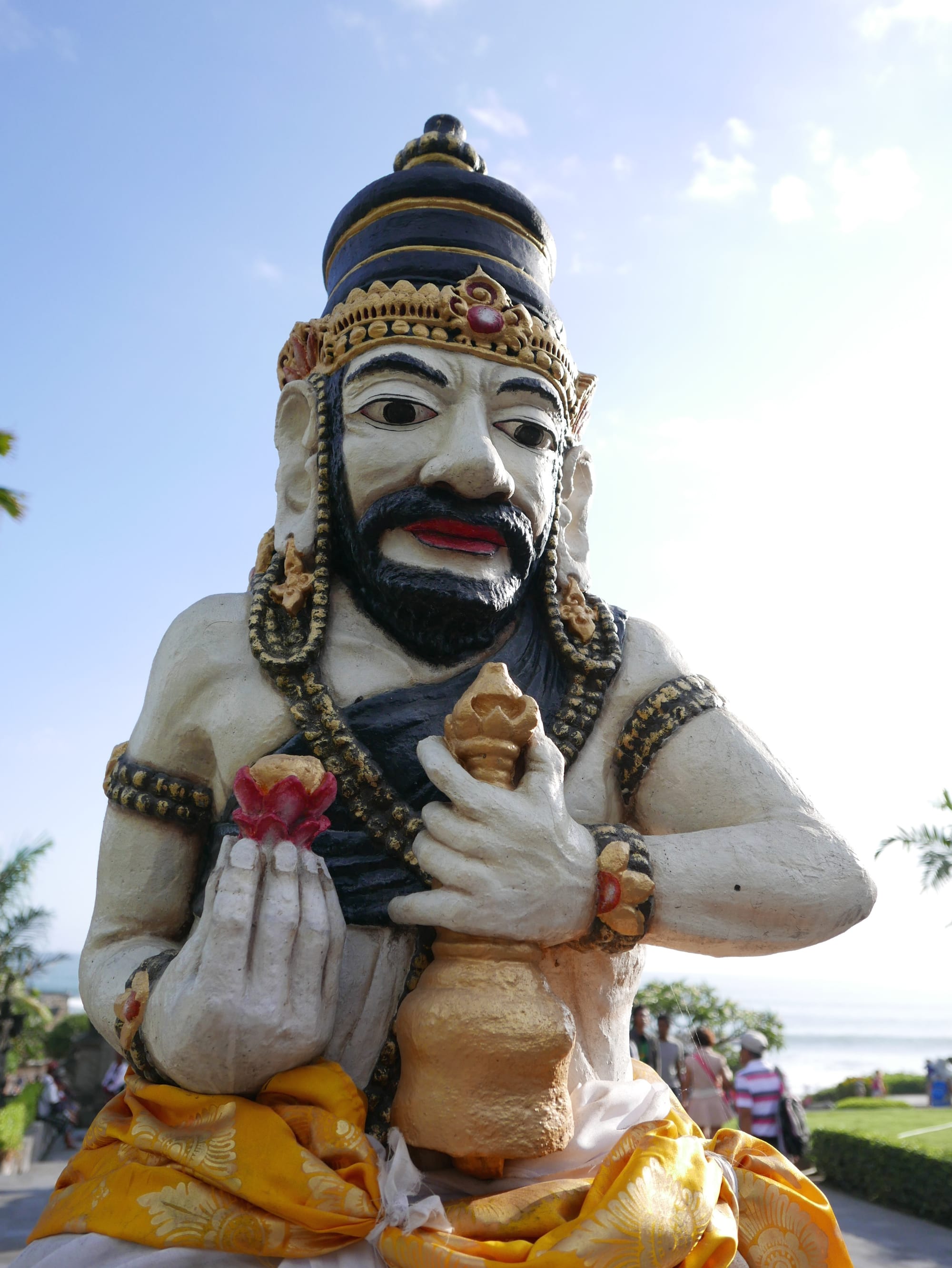
Once you get to the beach, you are still not safe from people trying to sell you stuff.
Besides the rather colourful plastic flower seller, there were also people selling kites and birds that flew, and several guys were wandering around with expensive cameras offering to take your photograph (they must hate smartphones!).
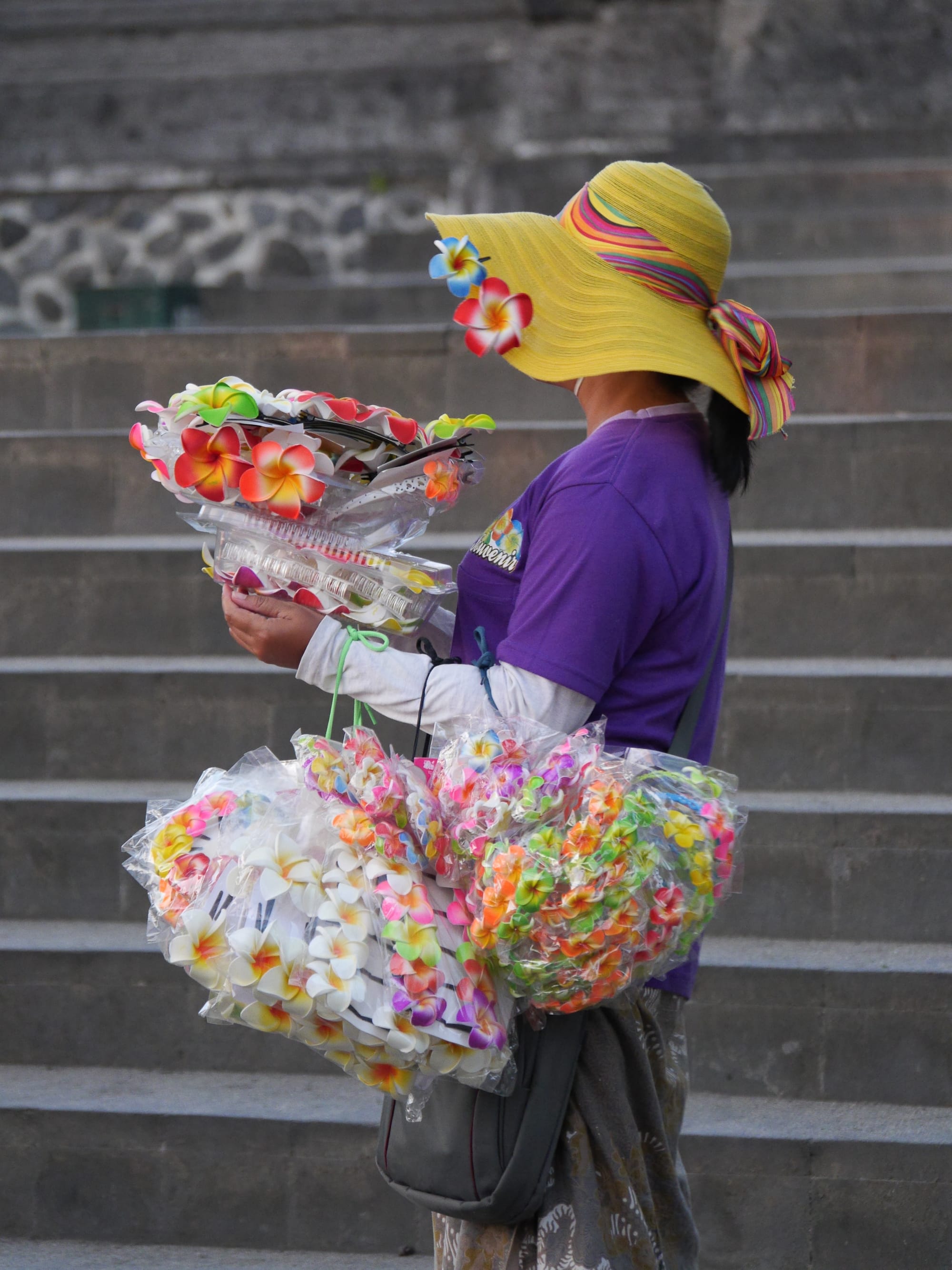
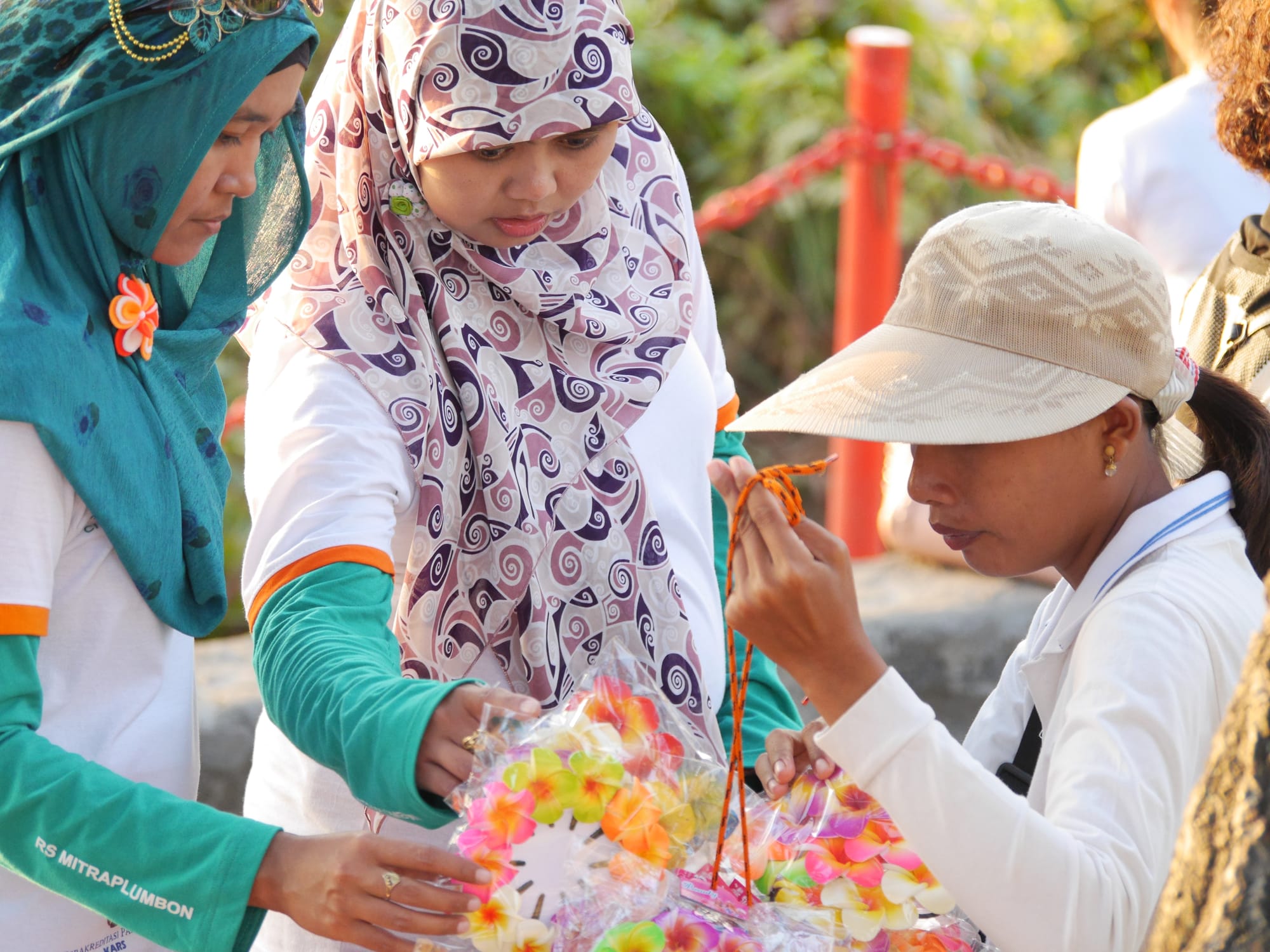
When I was at Tanah Lot, the tide was out, so the temple on the rock (which you can’t enter) was accessible. The place was heaving.
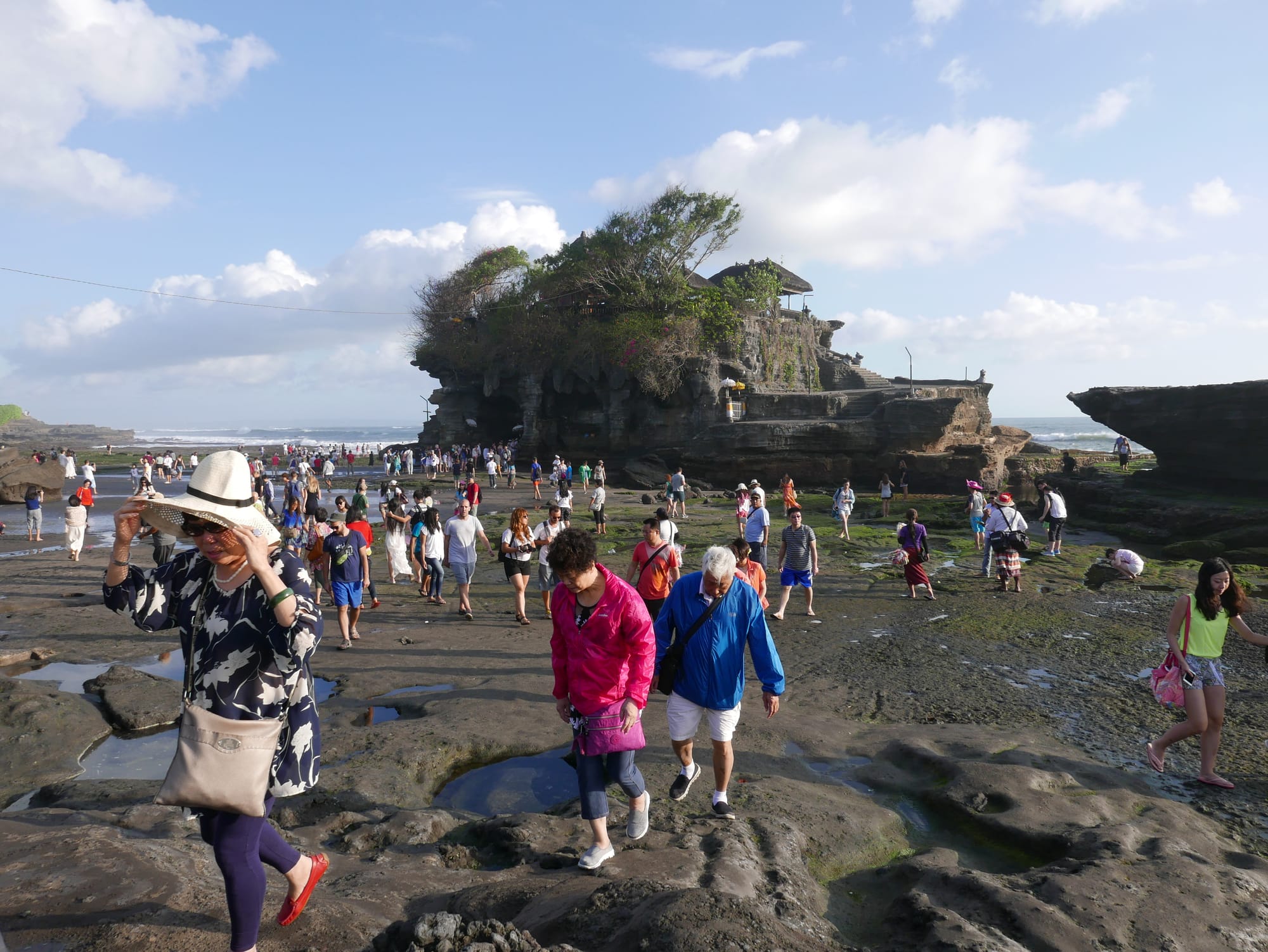
Tanah Lot attracts visitors from all over the world, and the beach, and the surrounding cliffs, are a great place for people-watching.
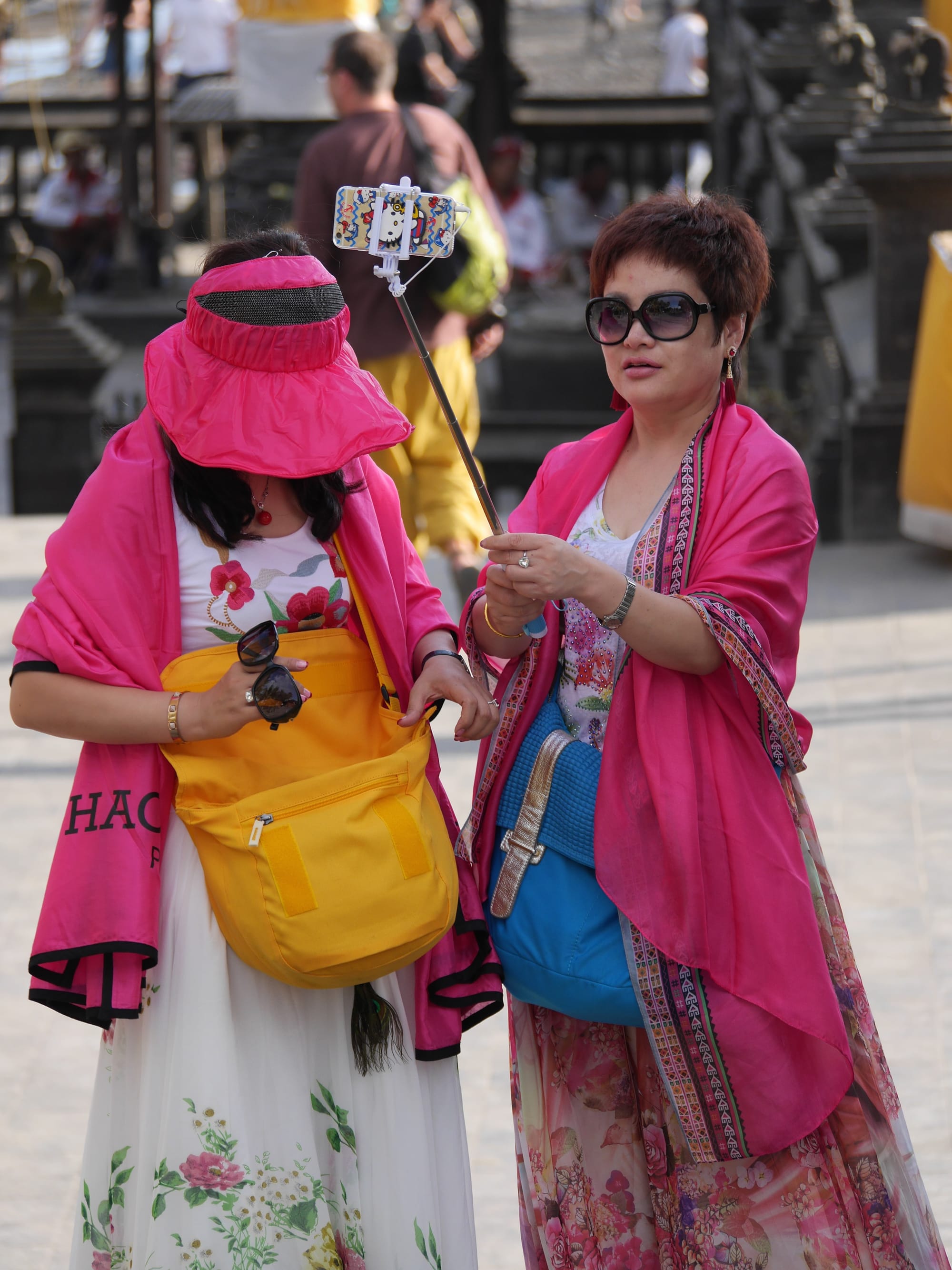
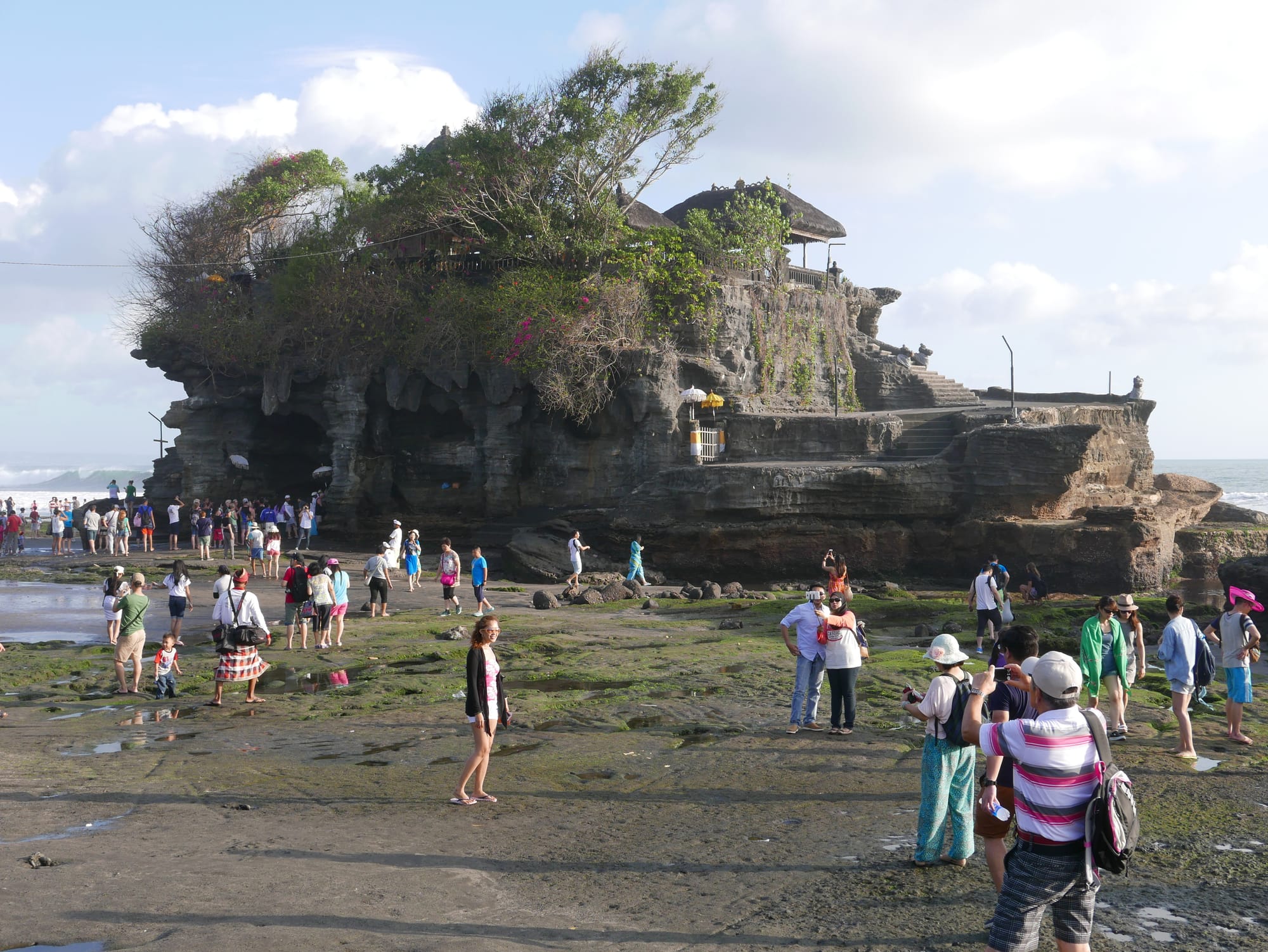
So many people.
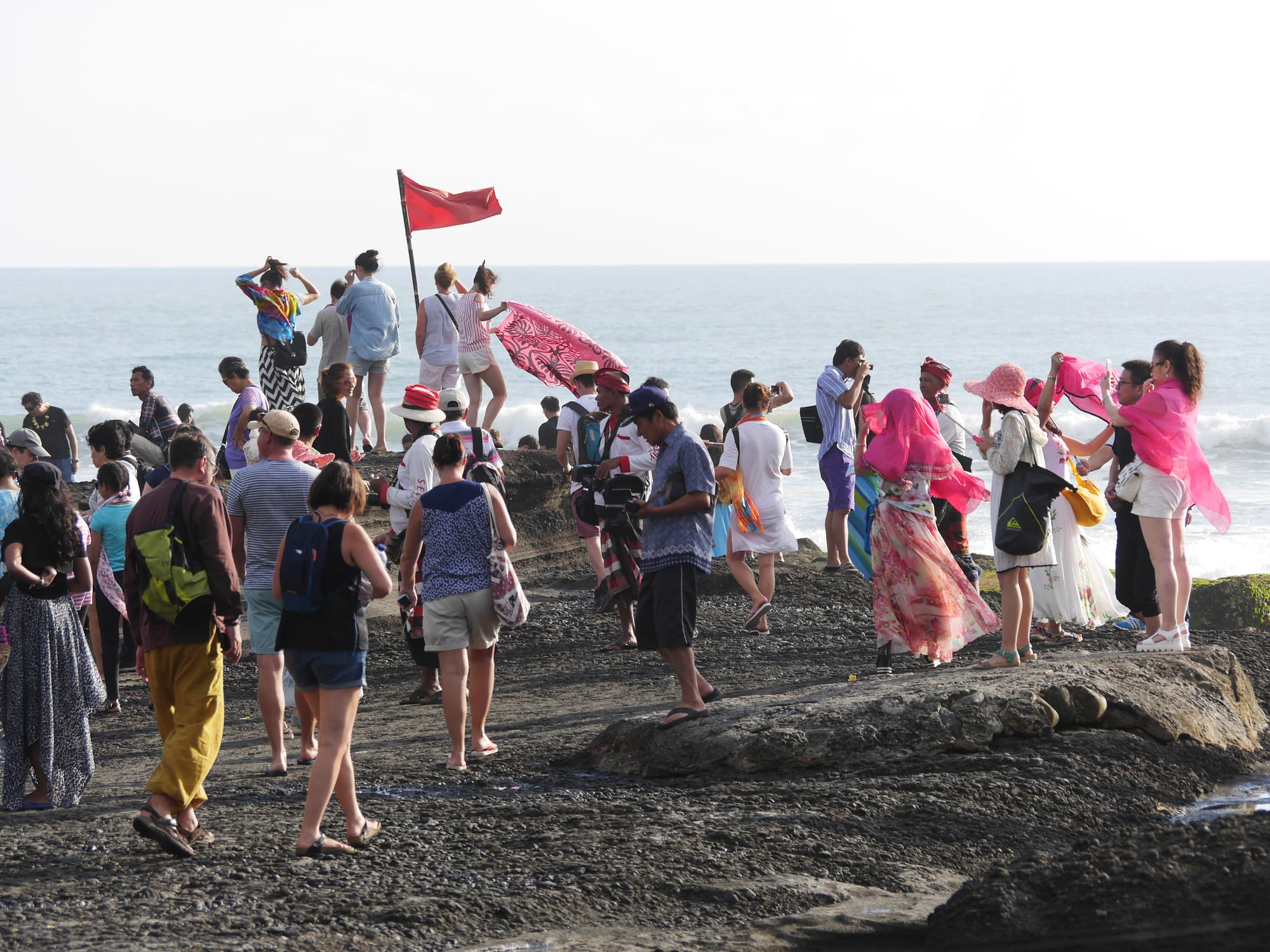
Even with so many people, some visitors still managed to find a quiet rock to sit on and contemplate the scene.
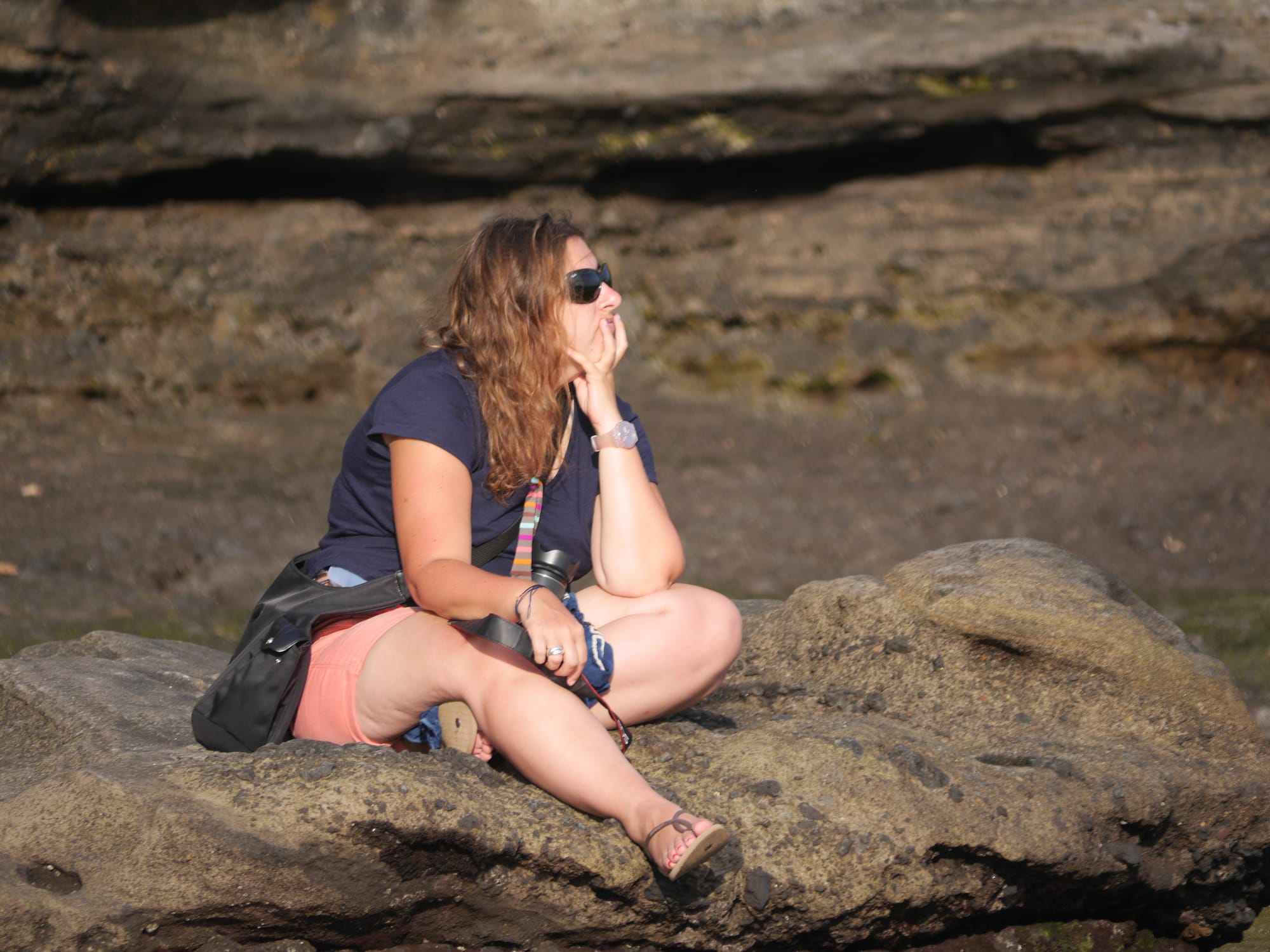
It wasn’t all tourists down the beach; there were local workers. The workers provided services and also worked at the “blessing stream”.
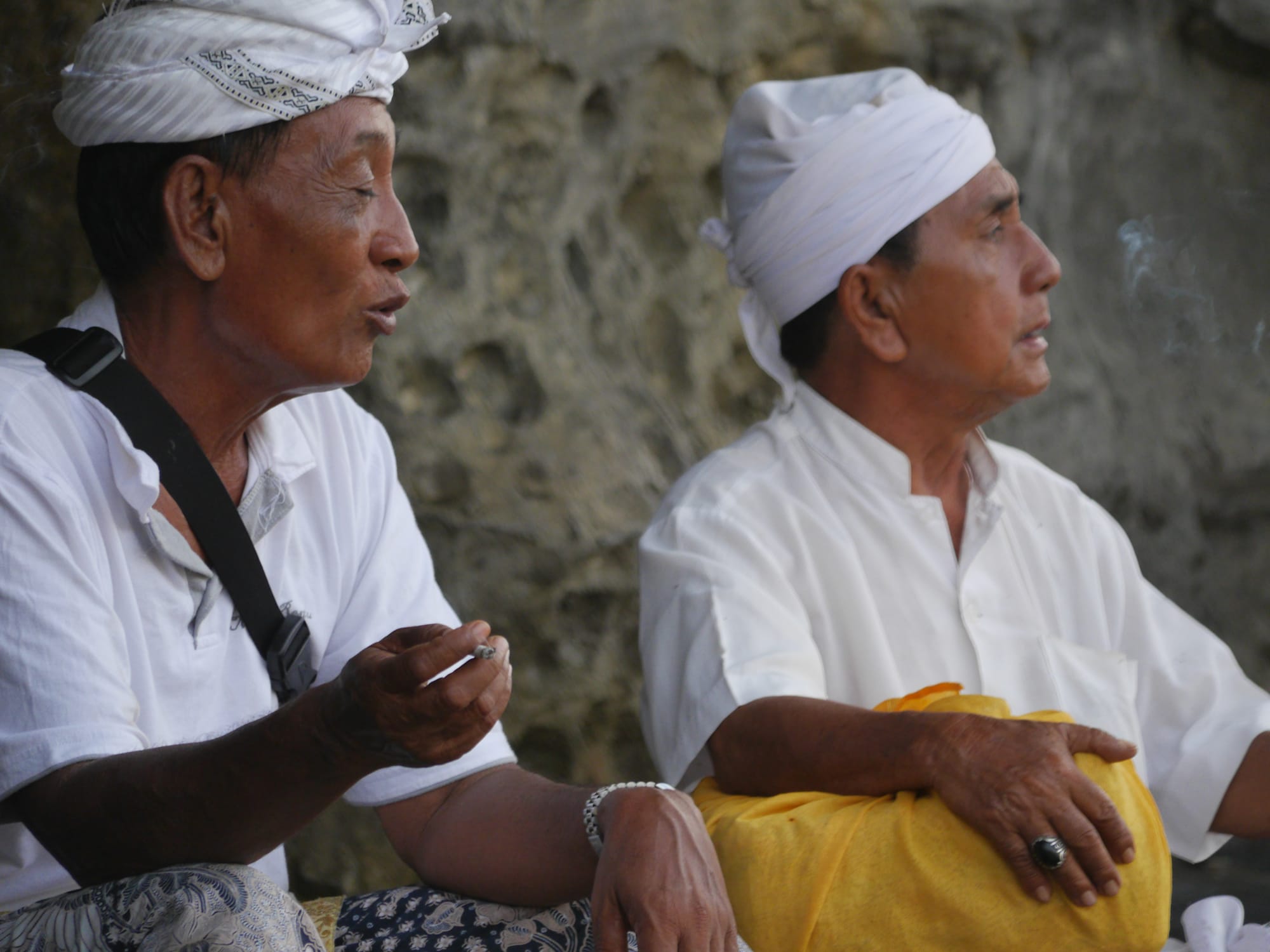
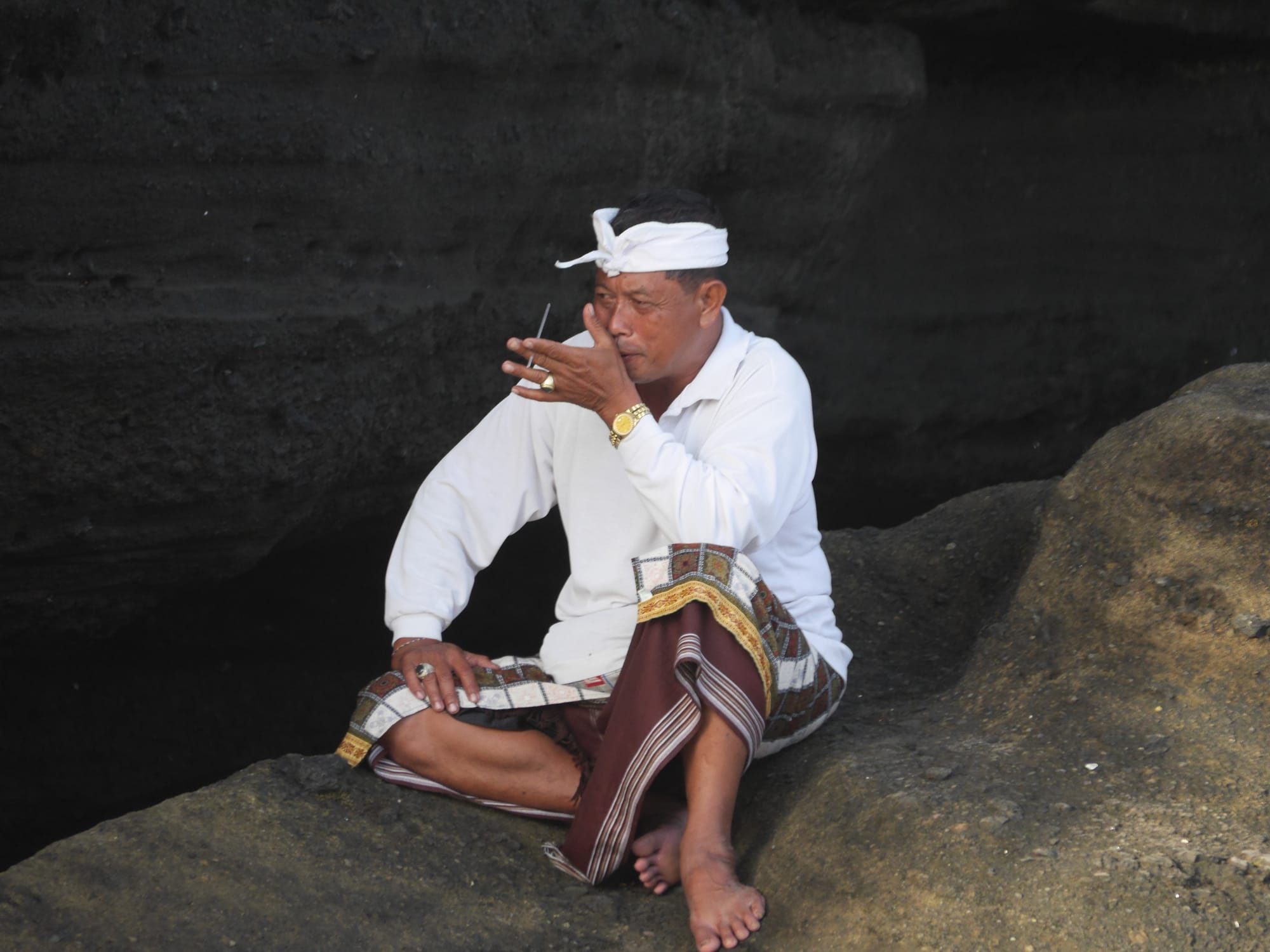
Sadly, the temple complex was not open to visitors.
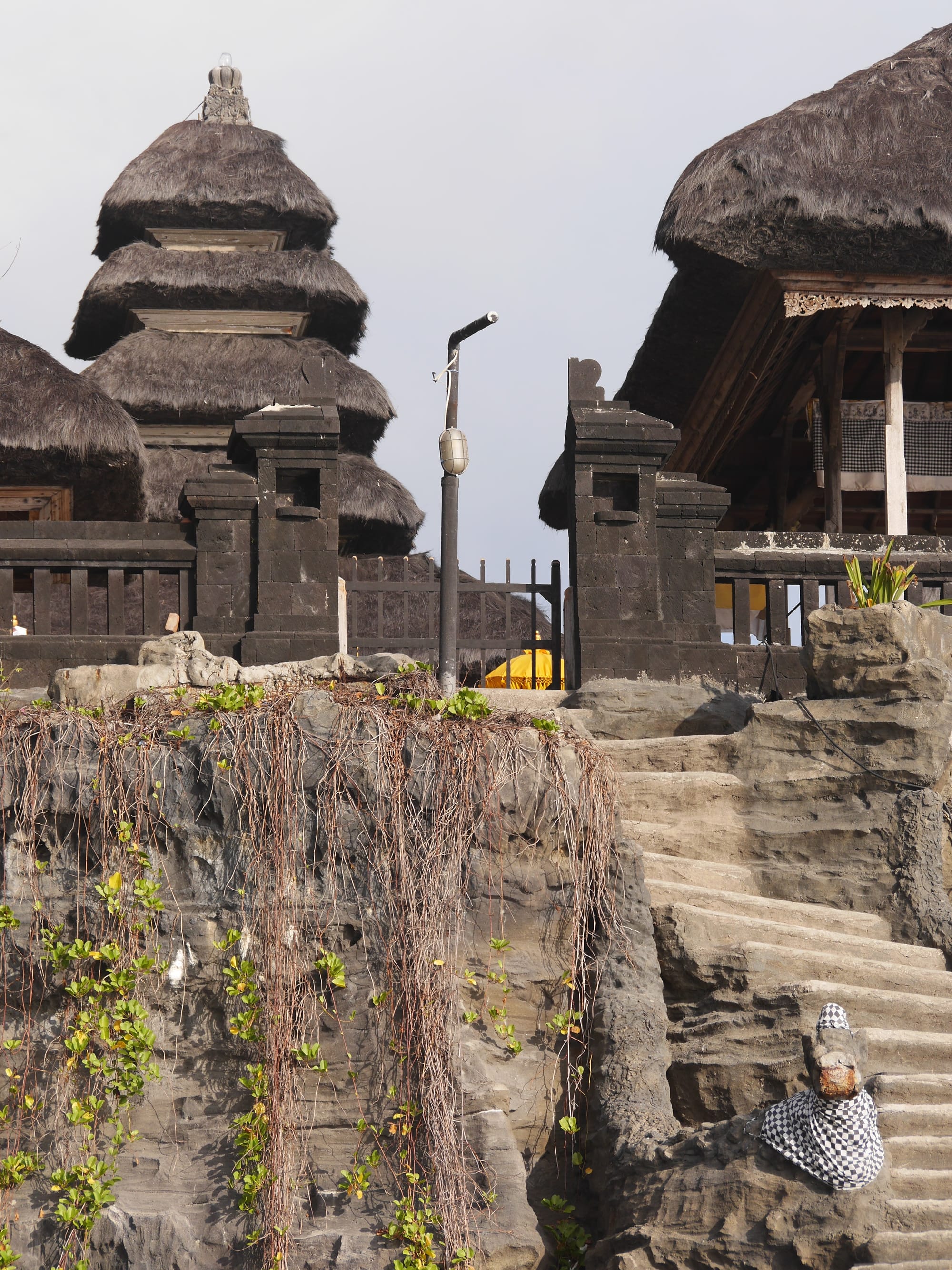
However, you could visit the holy spring, get blessed, and walk up some nearby stairs. I couldn’t see the attraction of walking up a few steps, but others did.
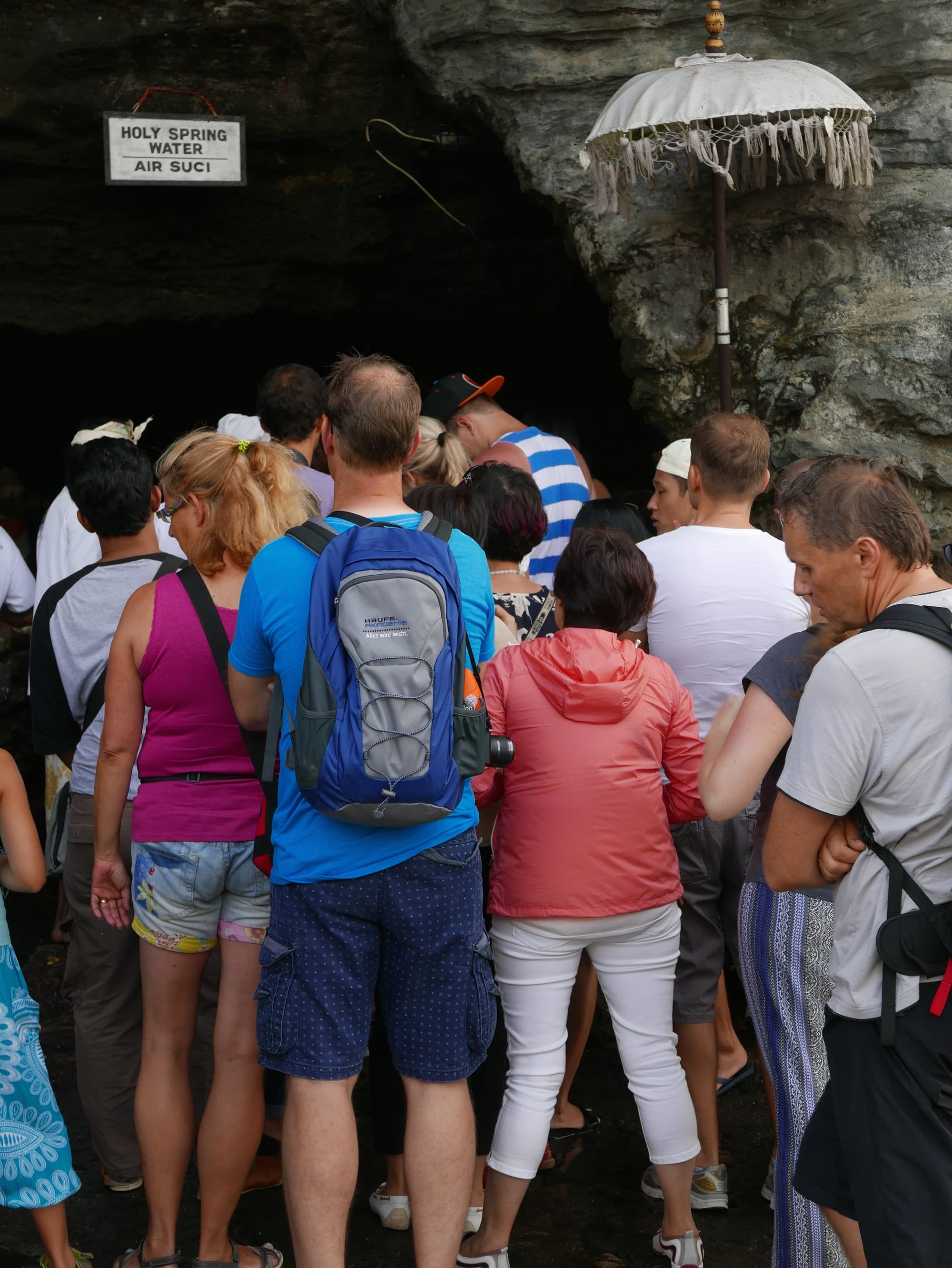
The blessing seemed to consist of being sprinkled with water and having a few rice grains stuck to your forehead.
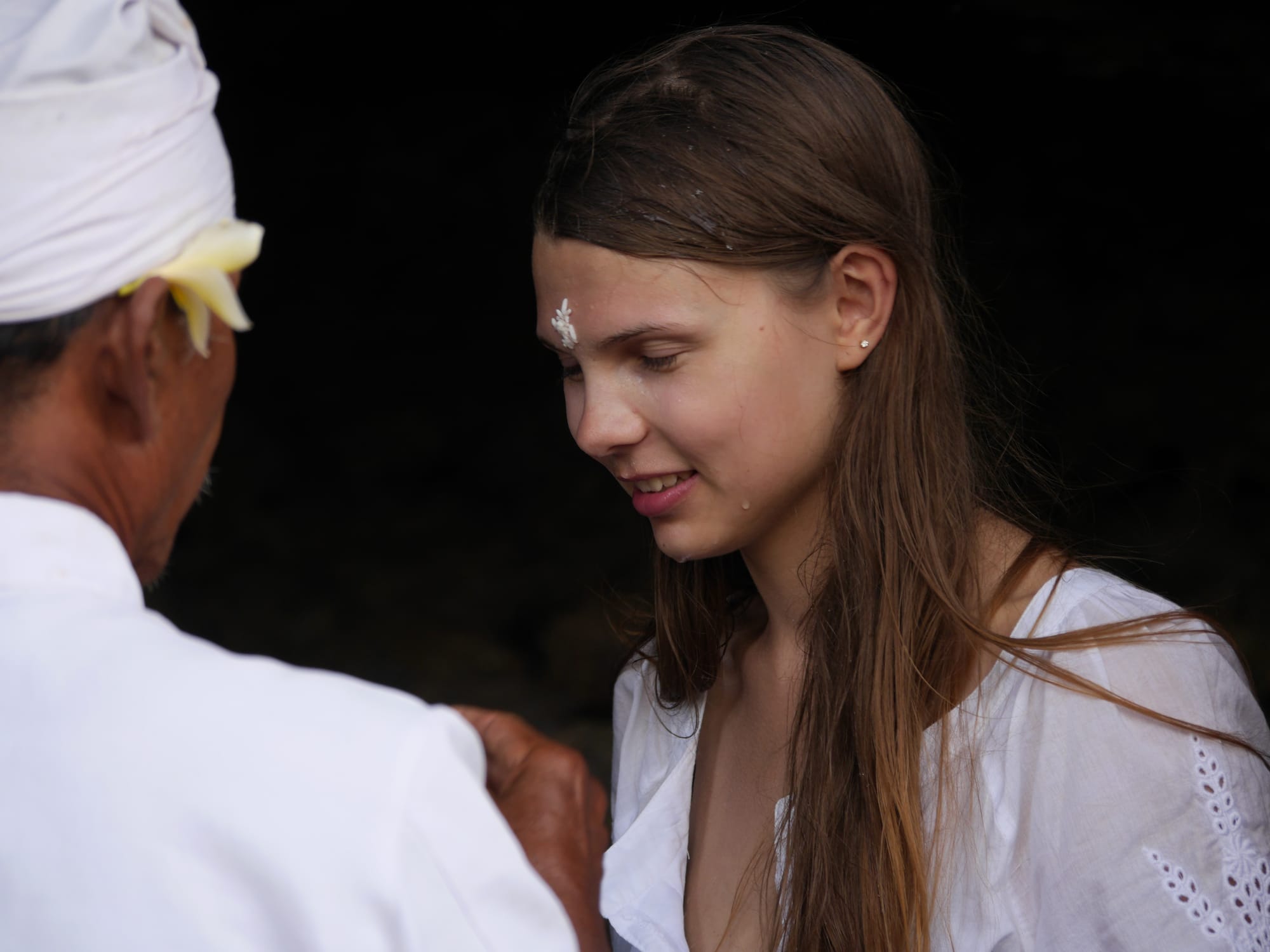
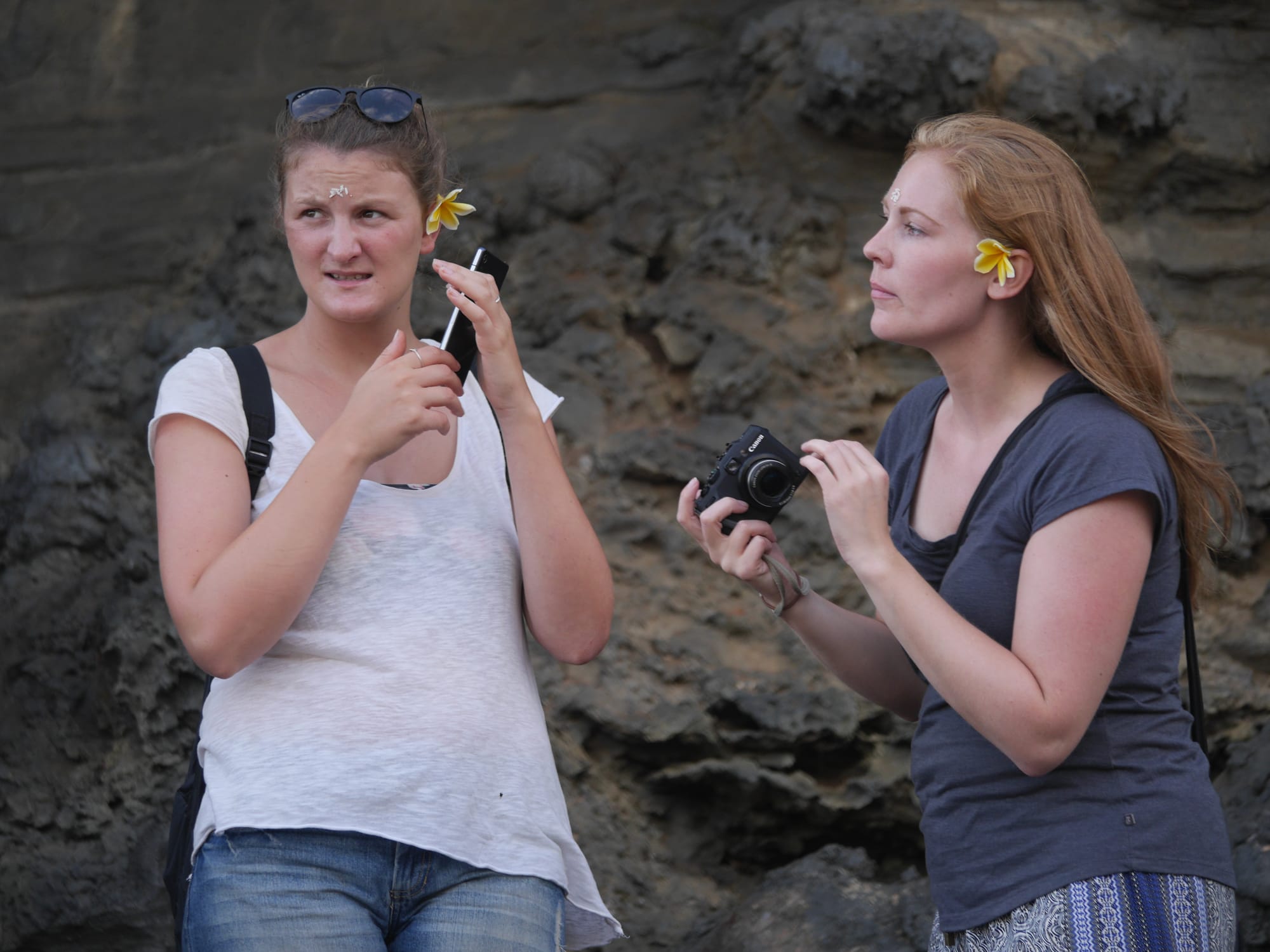
Once you had been blessed, you moved on to a gentleman guarding the base of the stairs.
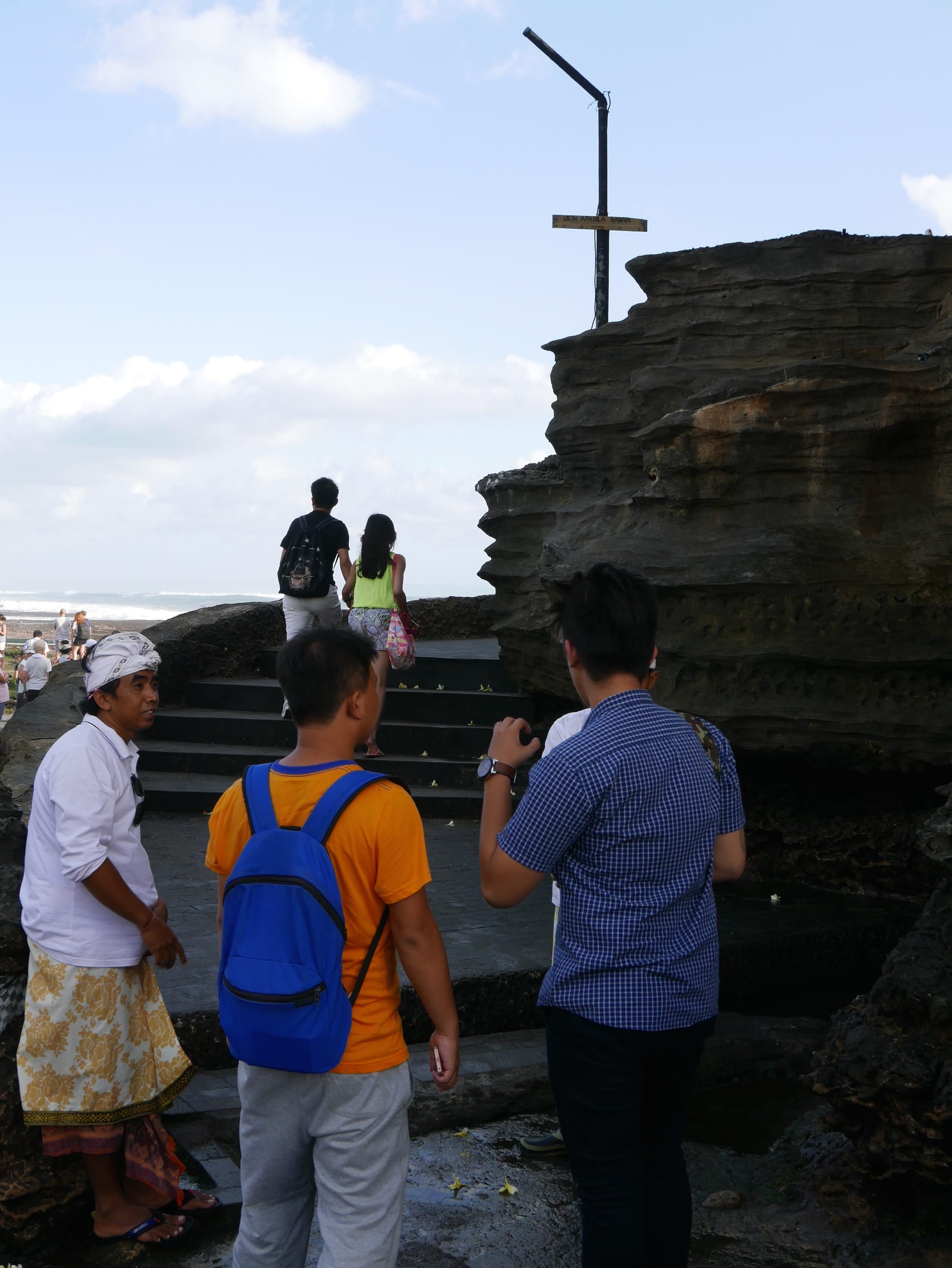
For some reason, being blessed and walking up a few steps seemed very popular.
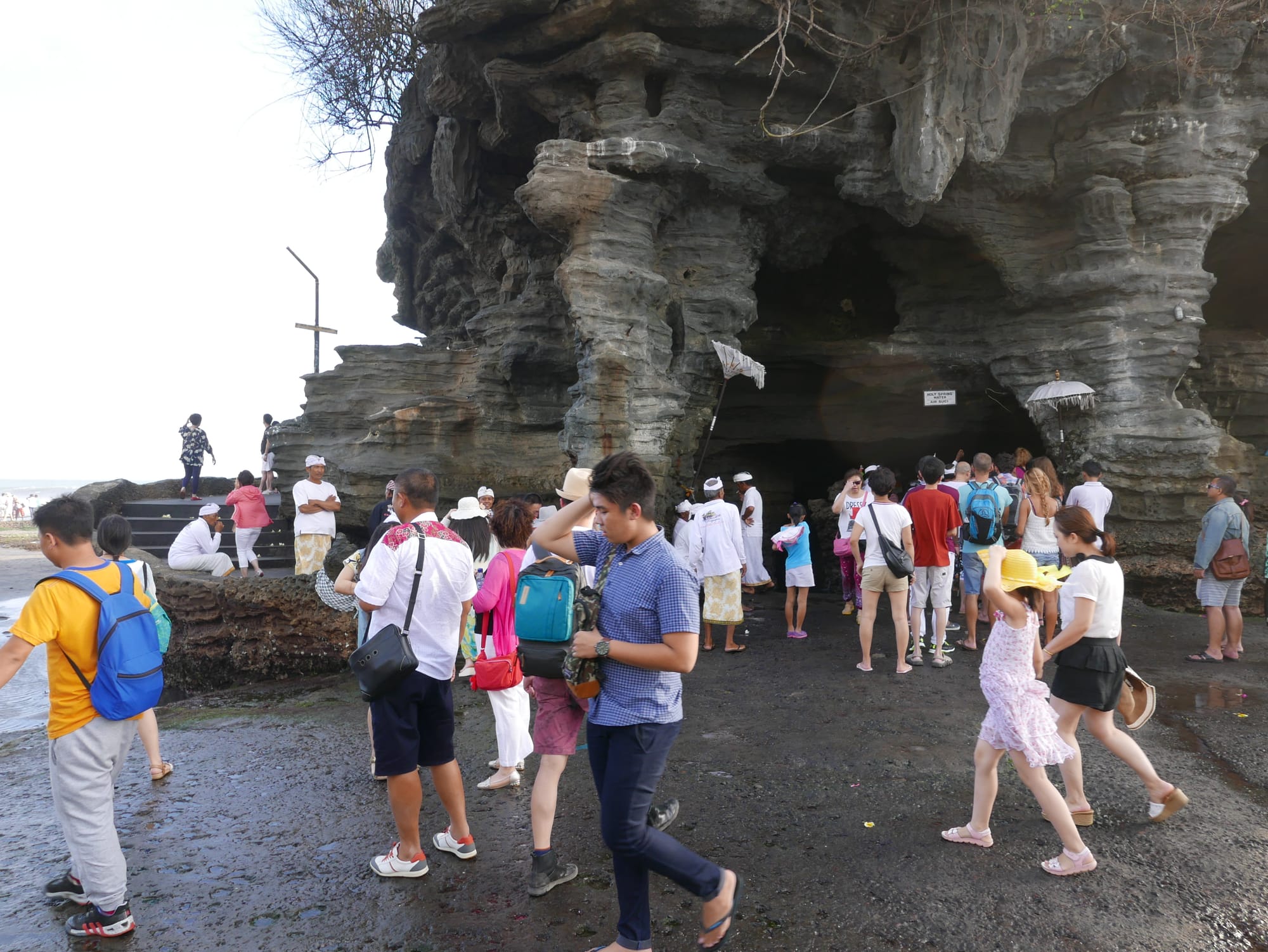
The tide was out when I visited Tanah Lot, so there was a lot of beach area to explore and numerous fellow tourists. I was surprised by how busy the place was.
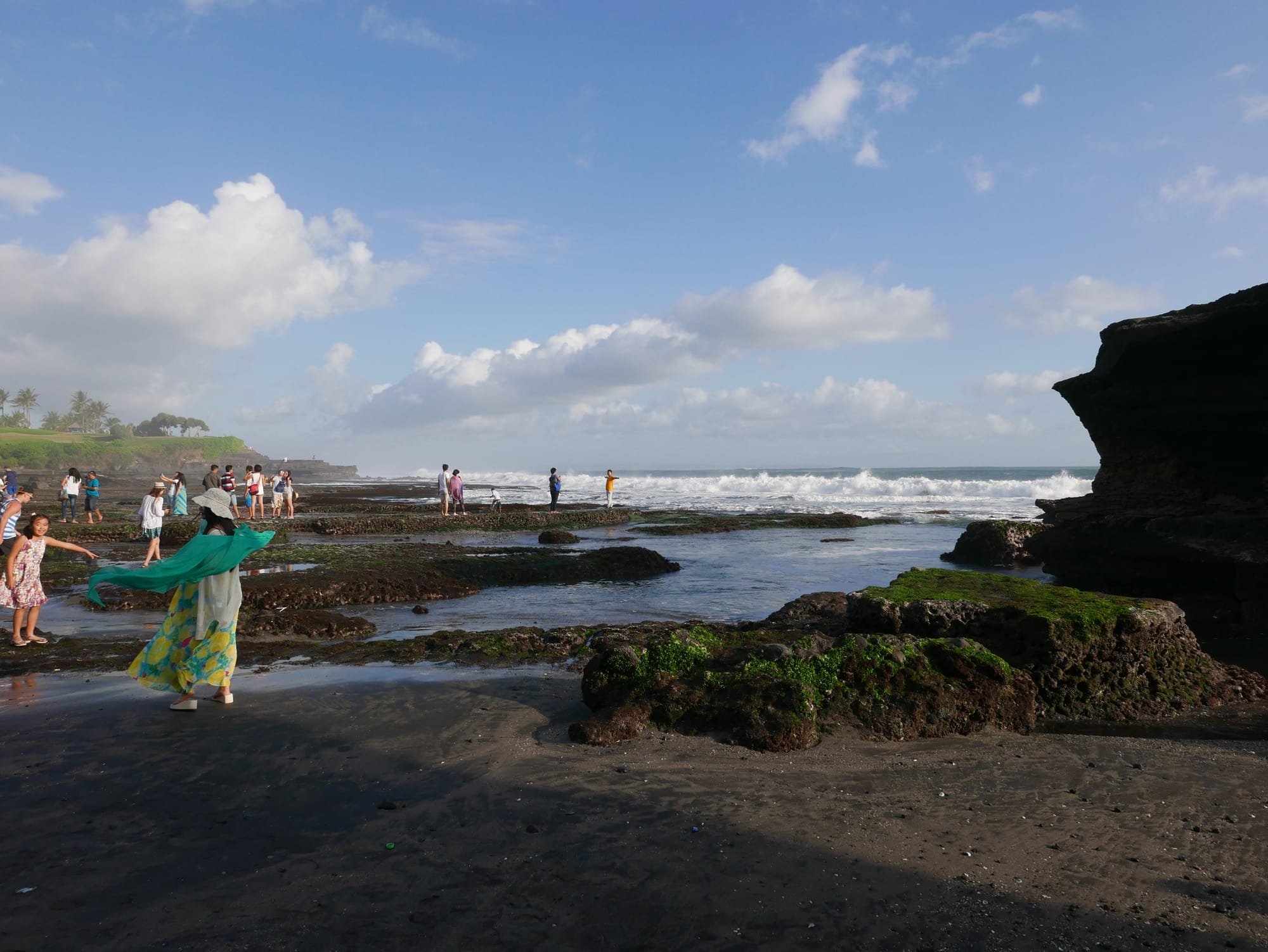
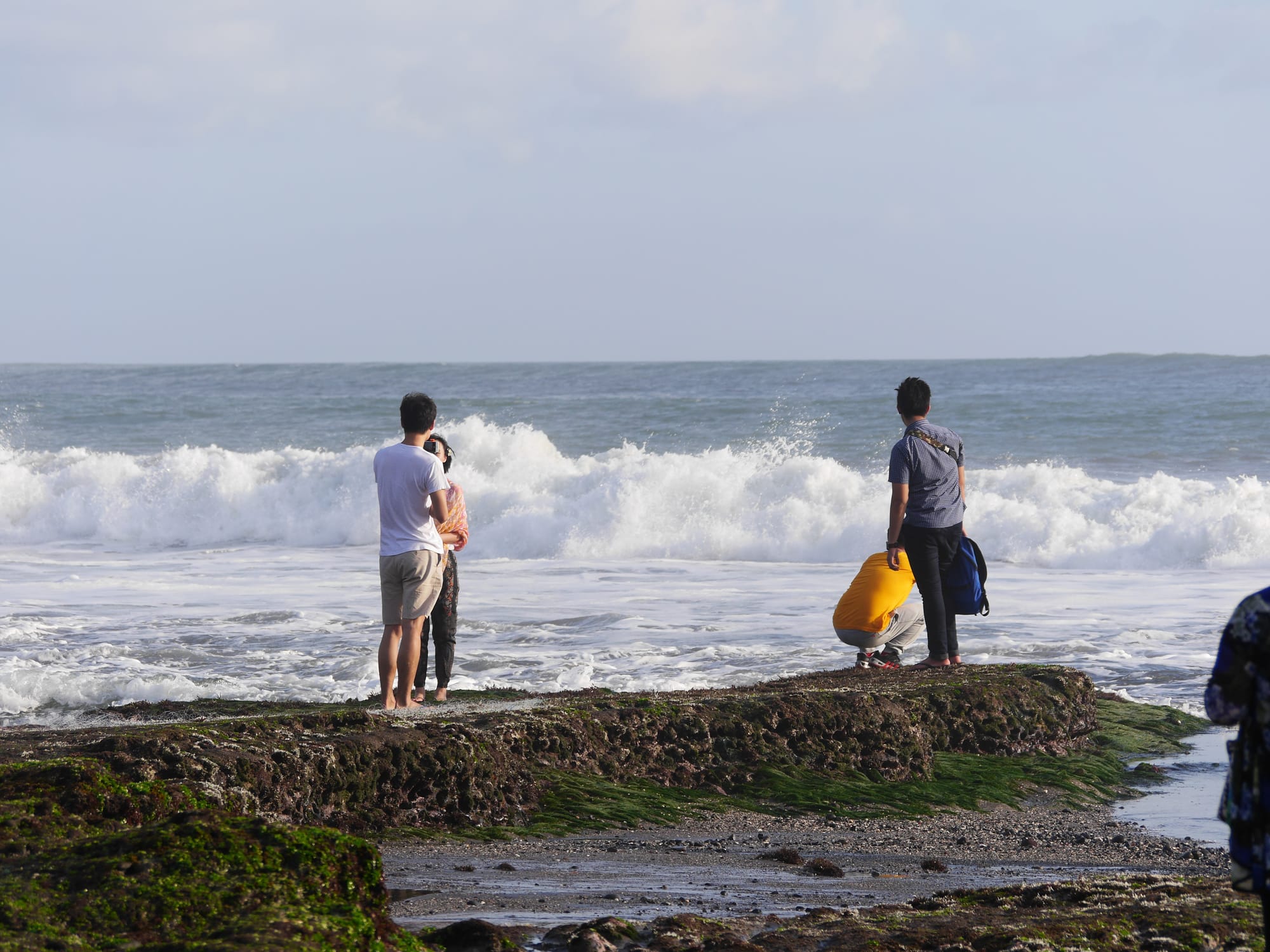
Looking back towards Tanah Lot, it was just astonishing how many people were milling around.
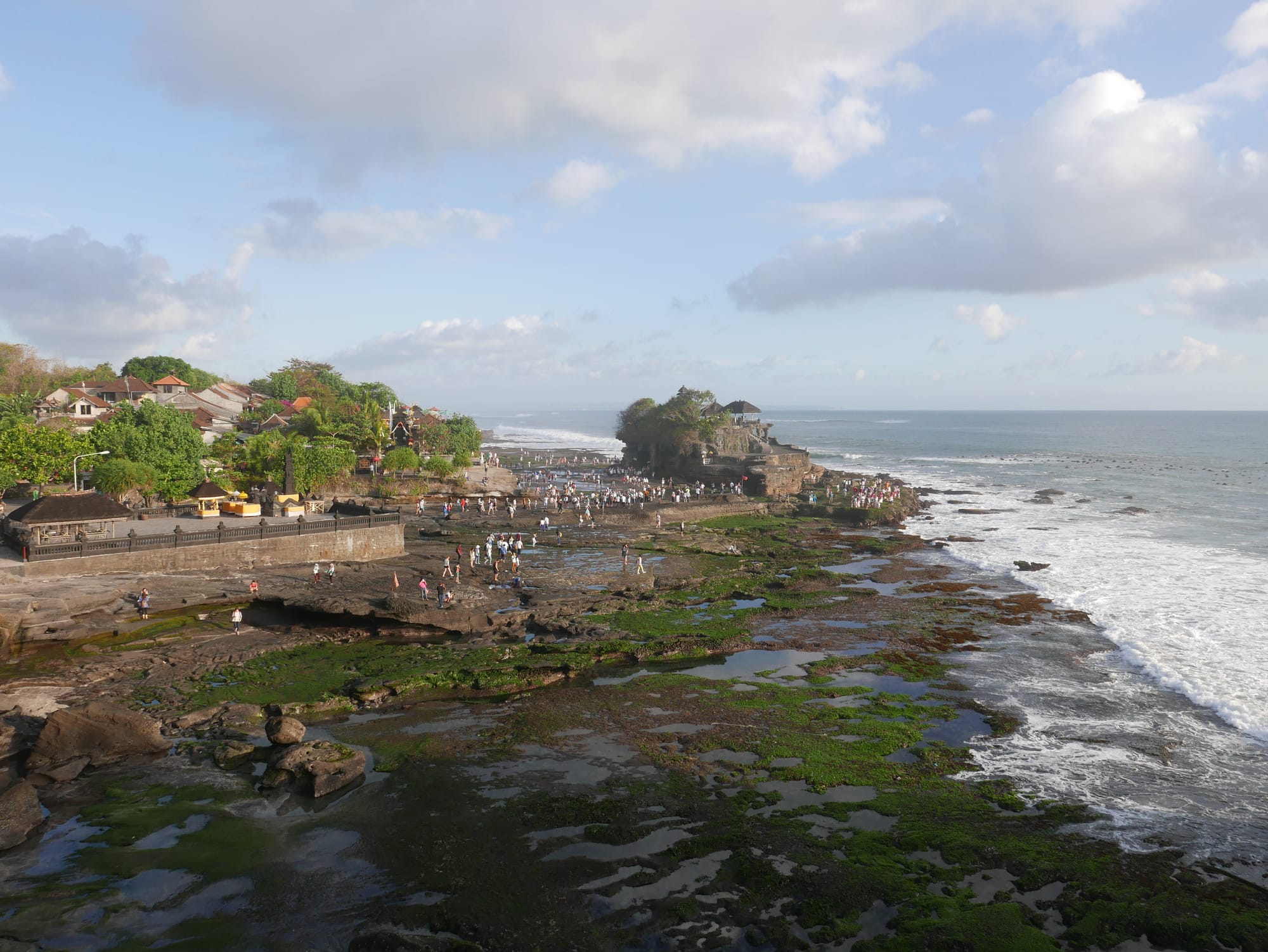
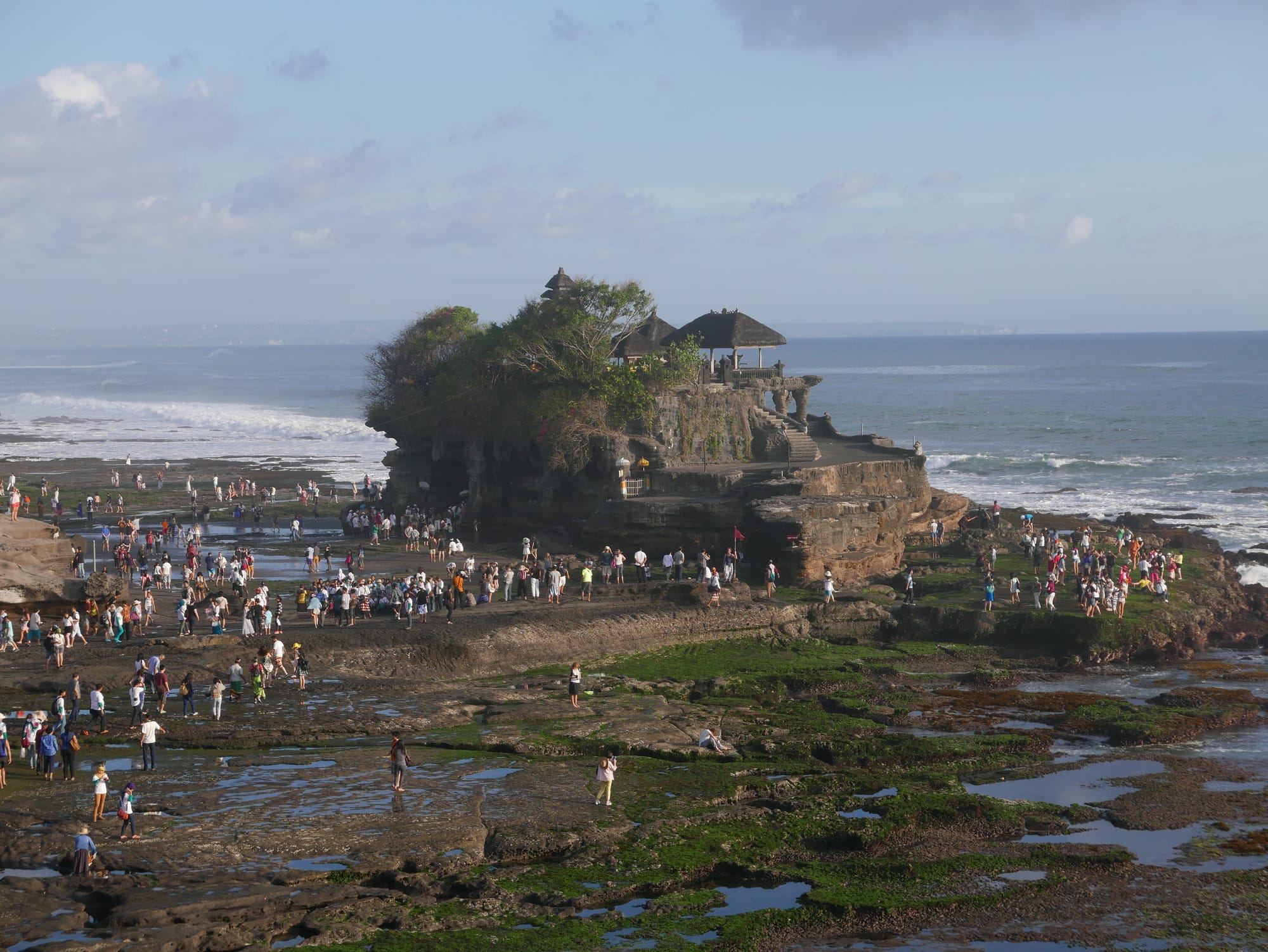
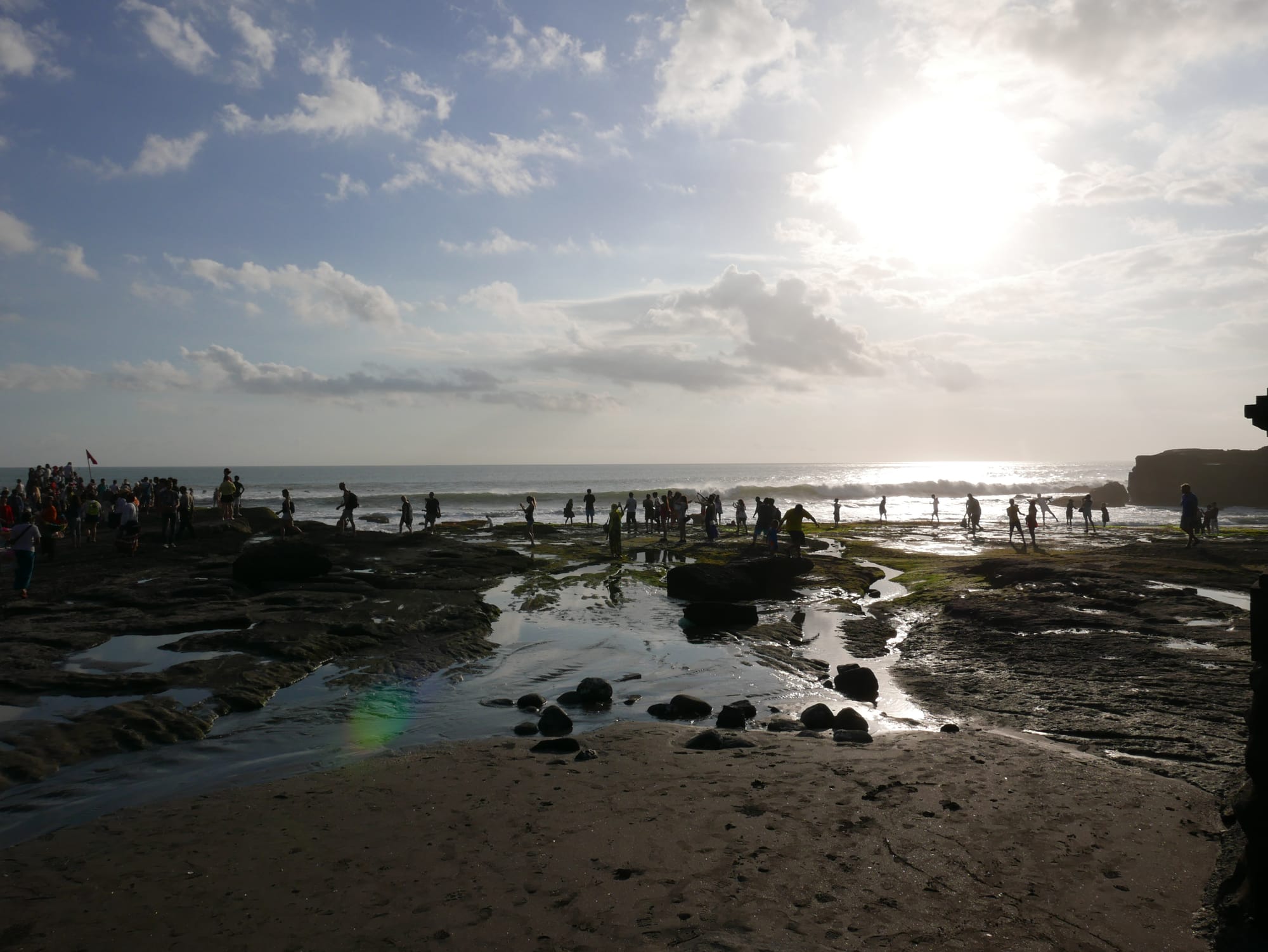
The views along the coastline were spectacular, particularly with the mist and spray coming off the sea.
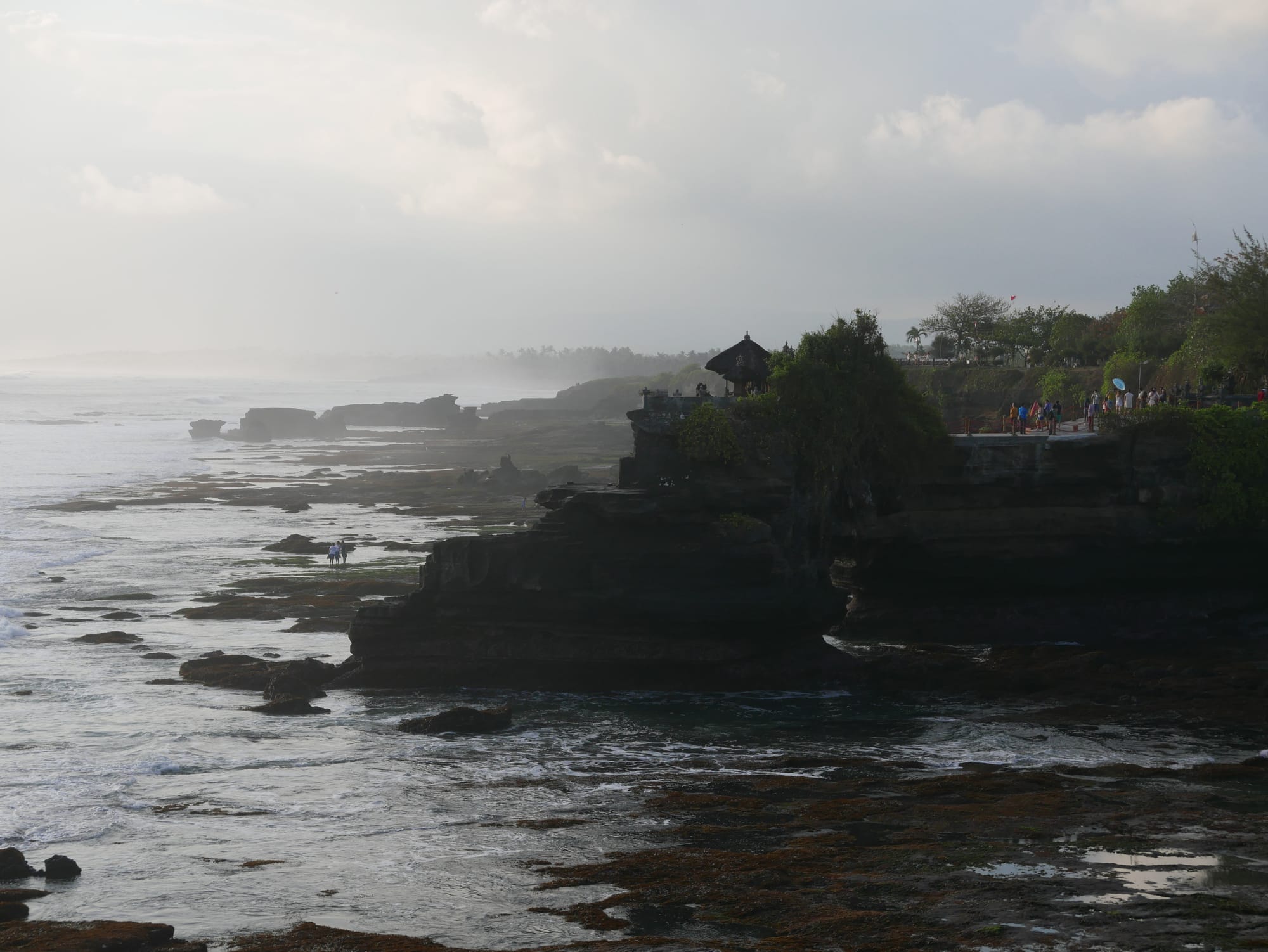
Walking along the cliff tops gave an excellent view of Tanah Lot and other temples dotted along the coastline.
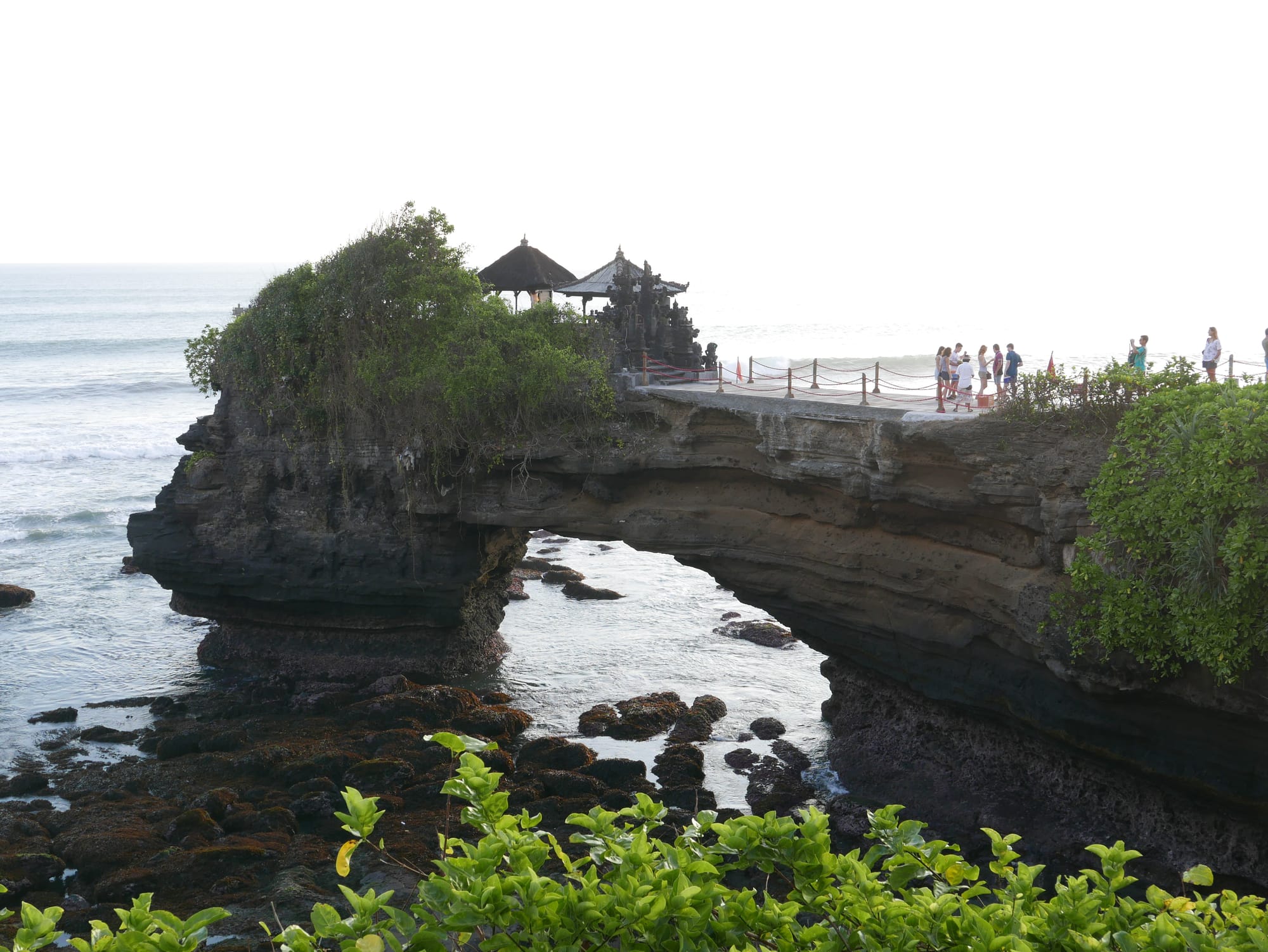
I loved the look and feel of these smaller temples. These were still used by the locals and had not become tourist traps.
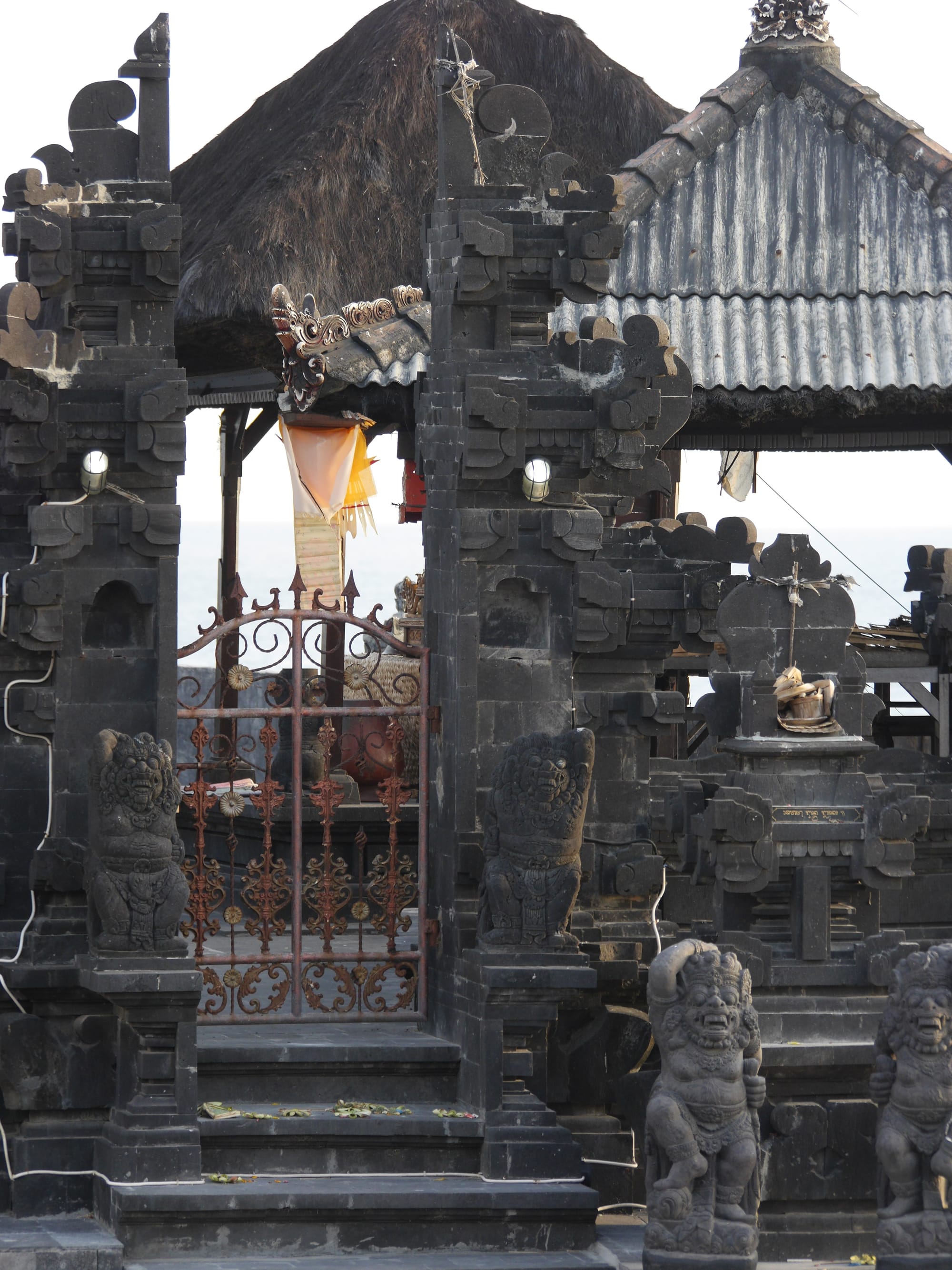
The sculptures at the temples were particularly good.
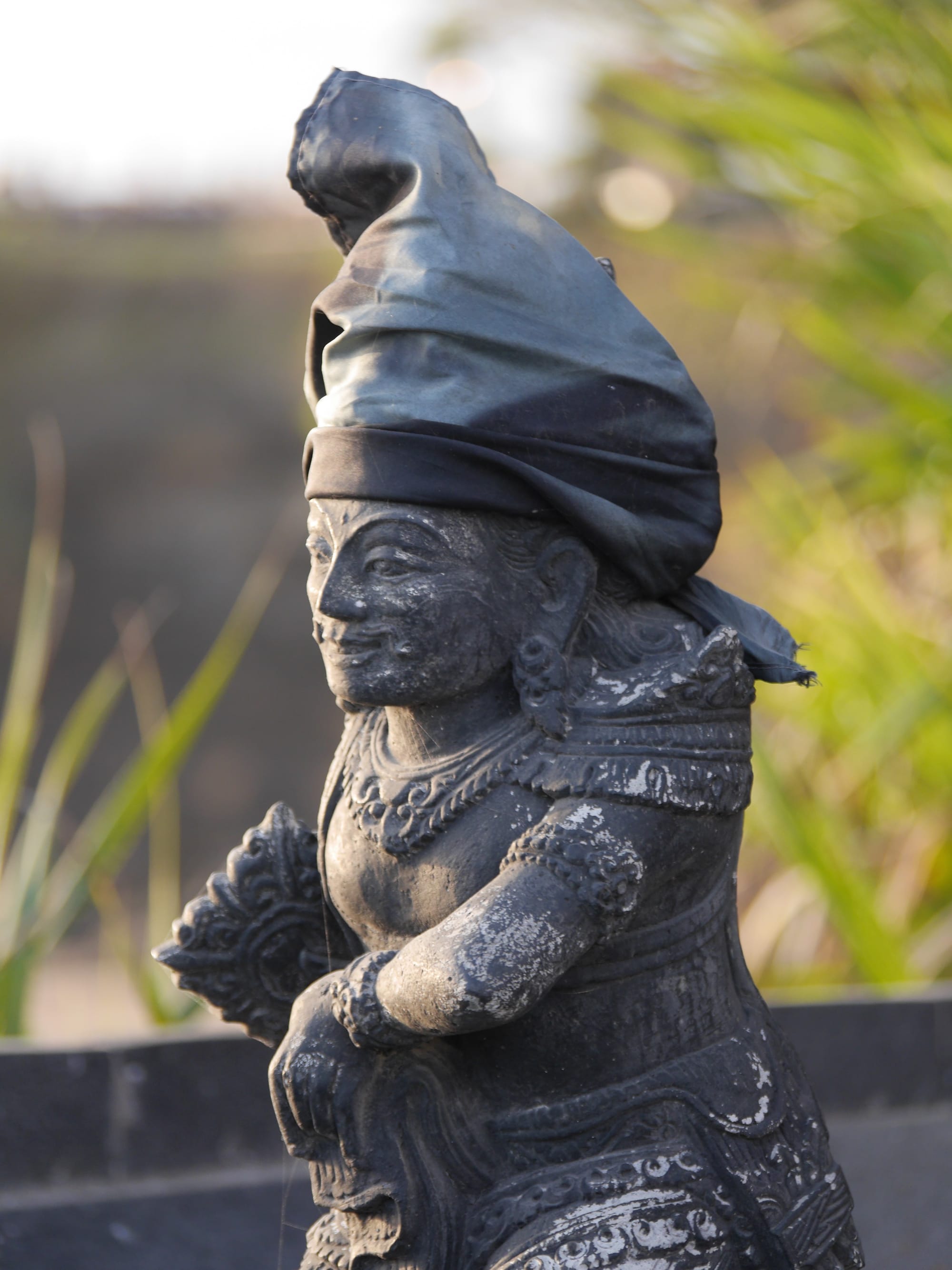
And to see the temples still in use was excellent.
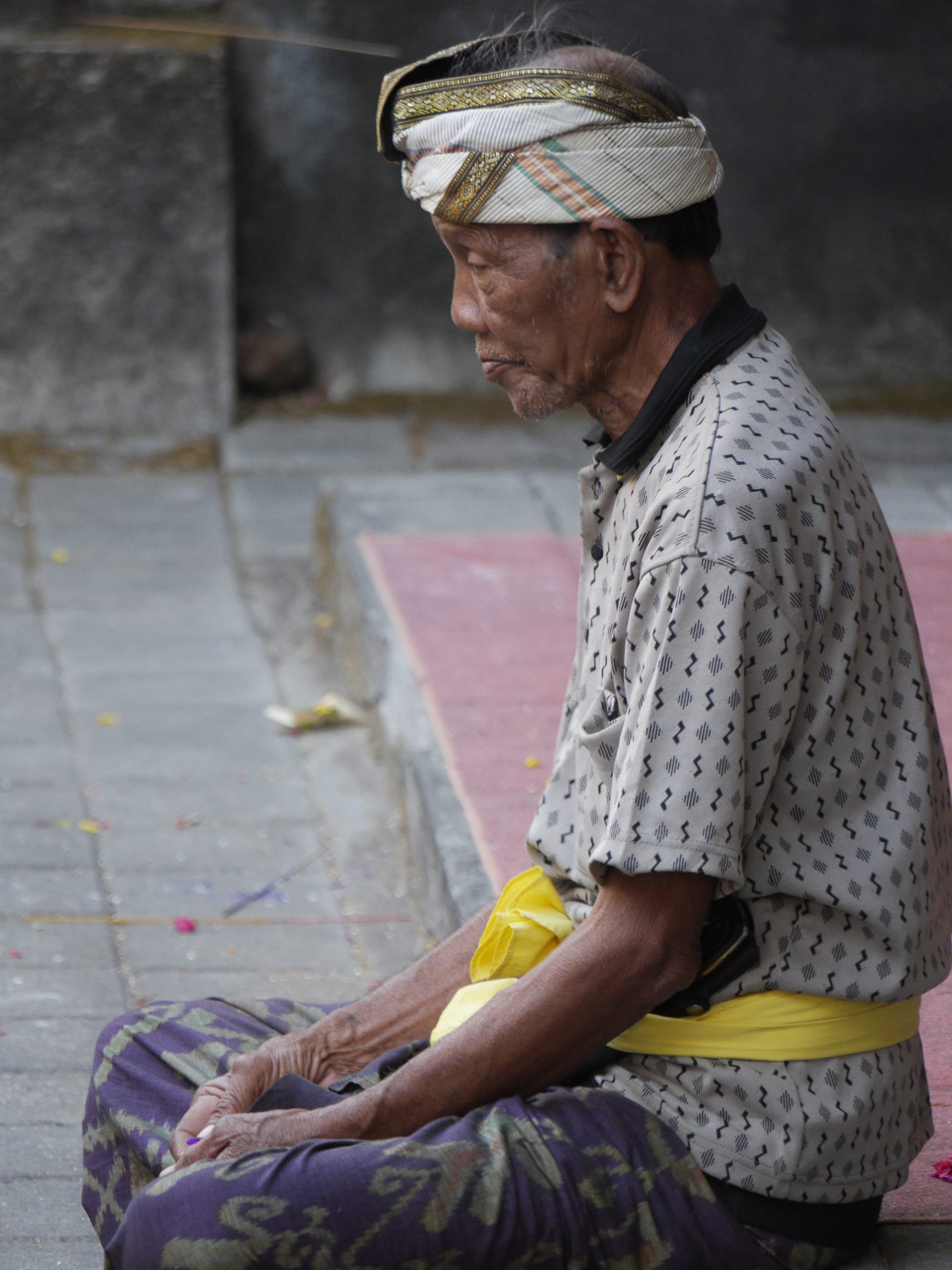
However, despite the temples still being used by the locals, there were the ever-present tourists and the small stalls and sellers they attracted.

Walking along the top of the cliff, looking at the temples and the tourist, and waiting for the sun to set, was an enjoyable way to finish my first full day in Bali.
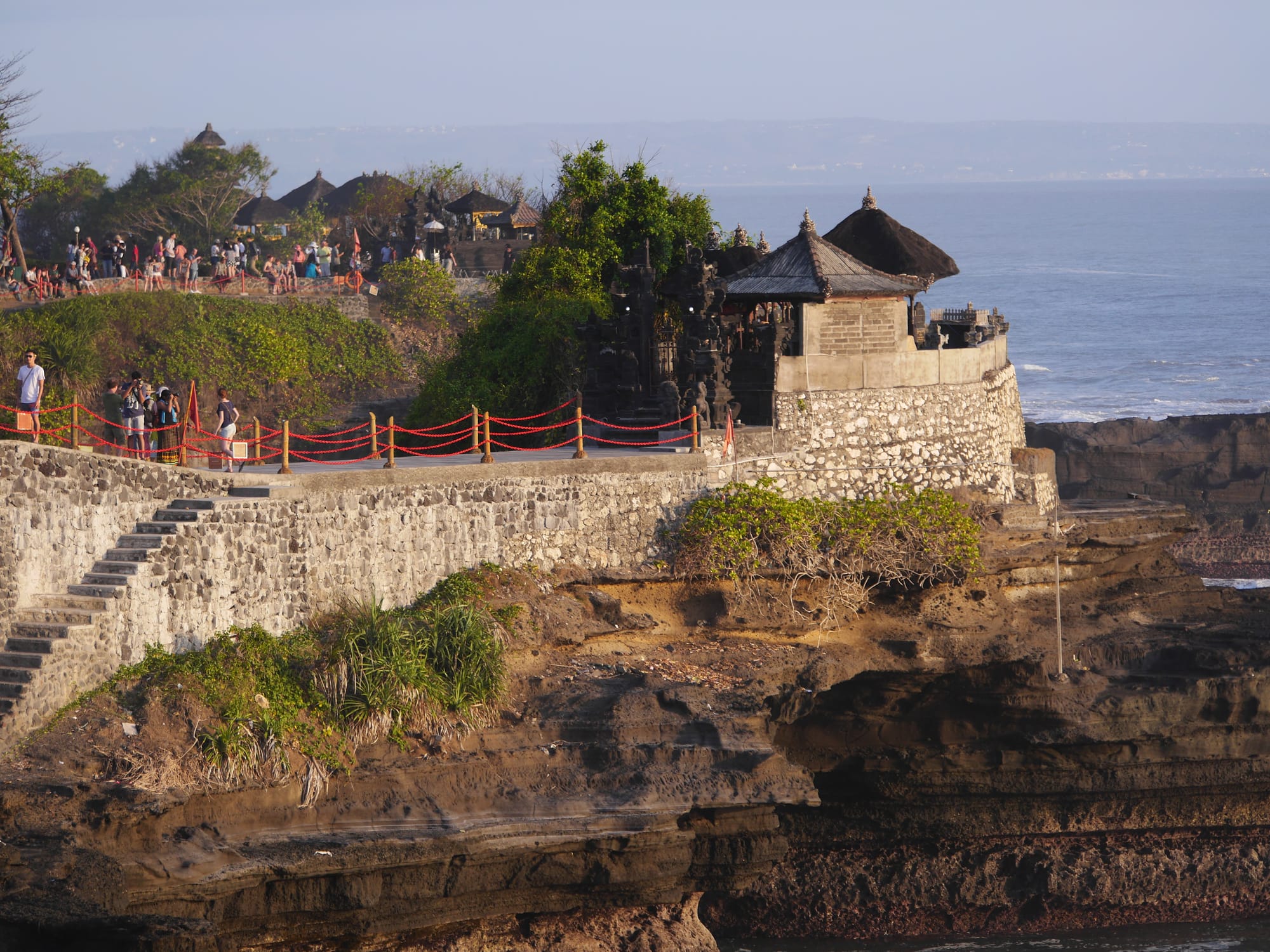
And I joined my fellow tourists on the cliff top, waiting for the sun to go down.
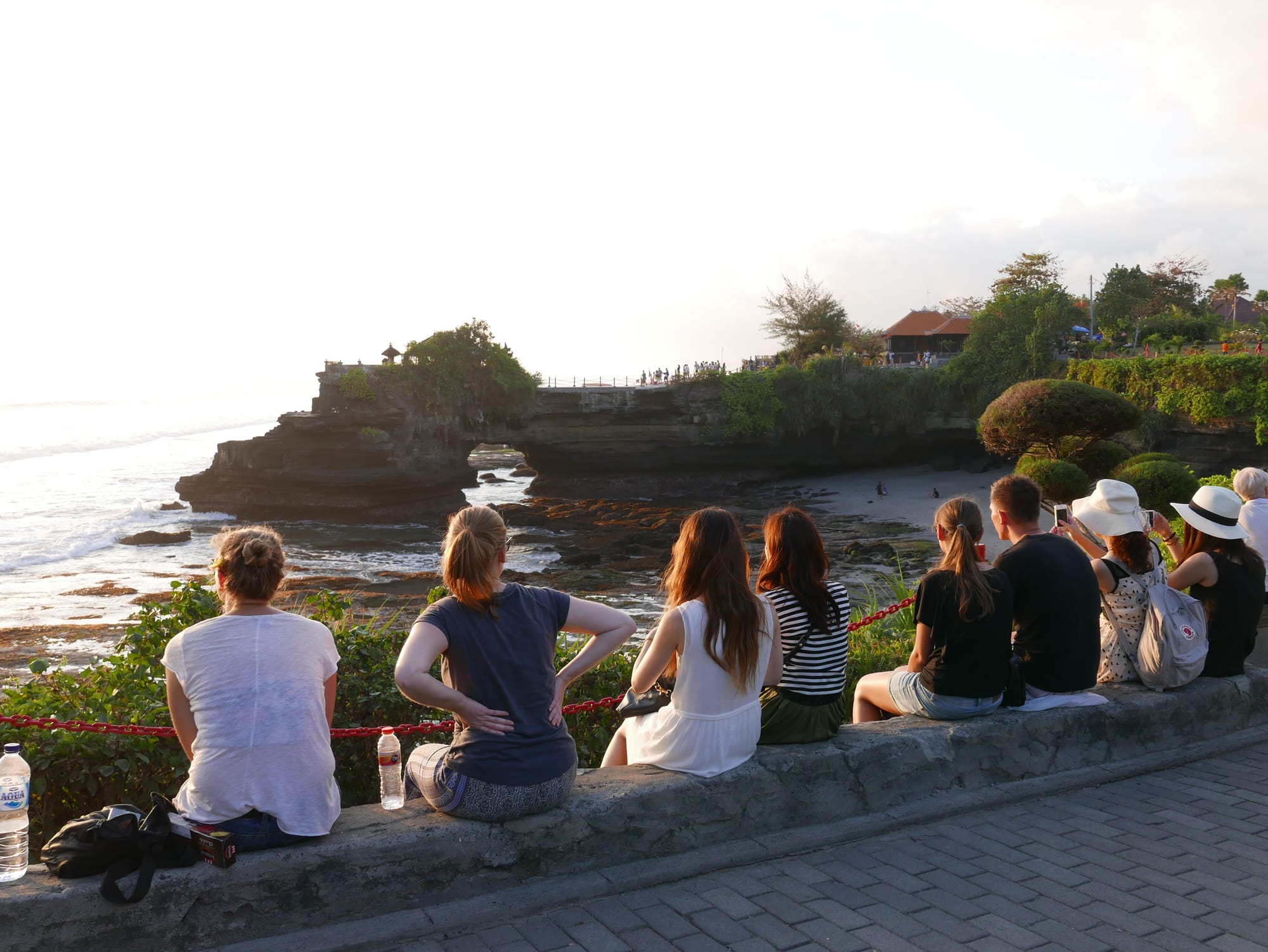
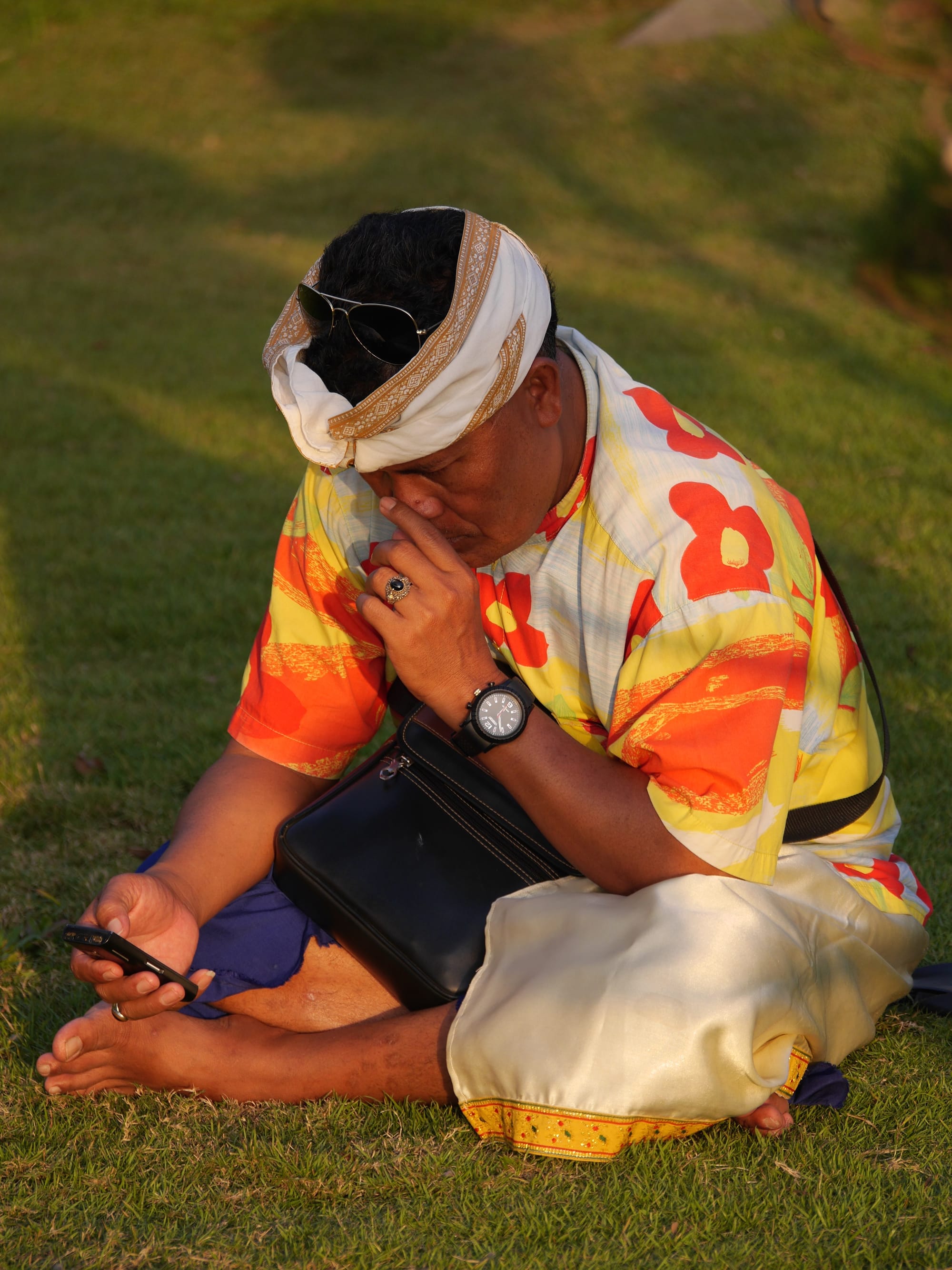
The views on and along the beach were spectacular.
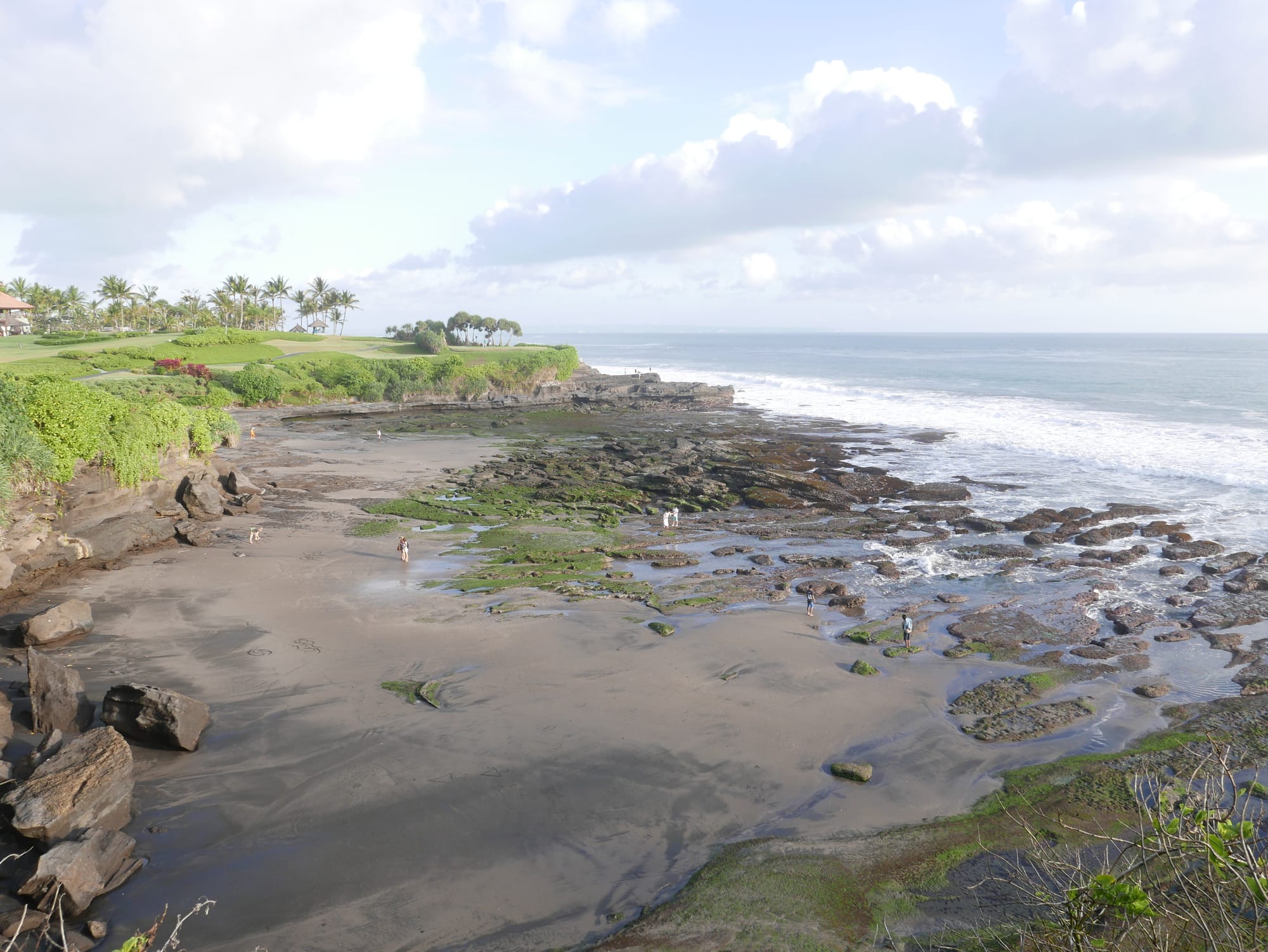
Finally, the thing I had been waiting for started. The sun slowly began to creep towards the horizon.
Some people sat on the cliff top and waited for the sun to set.
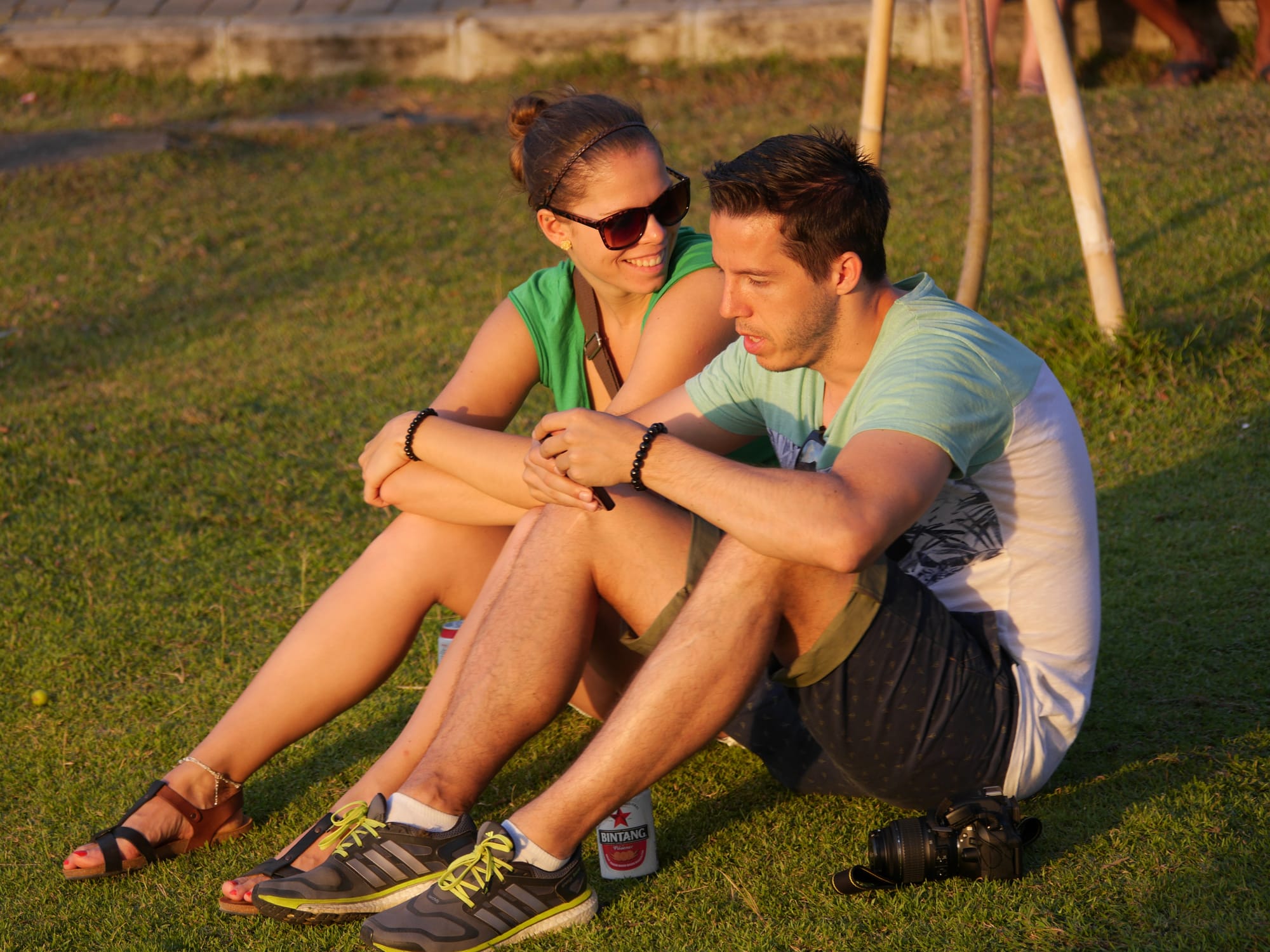
Others waited on the beach.
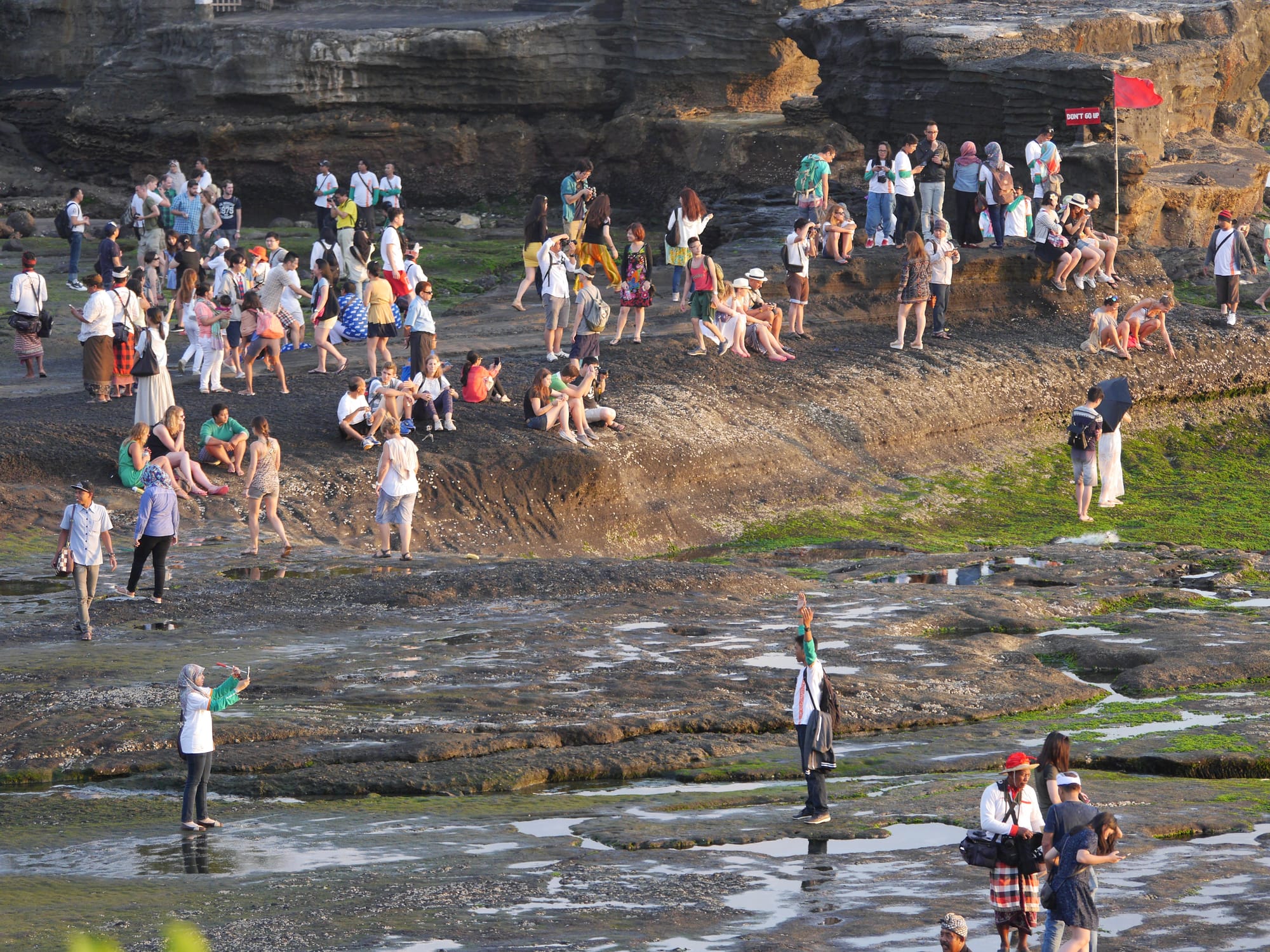
On one cliff top was a series of bars and restaurants where you could sit down, enjoy a cool drink, and wait for the sun to sink behind the horizon.
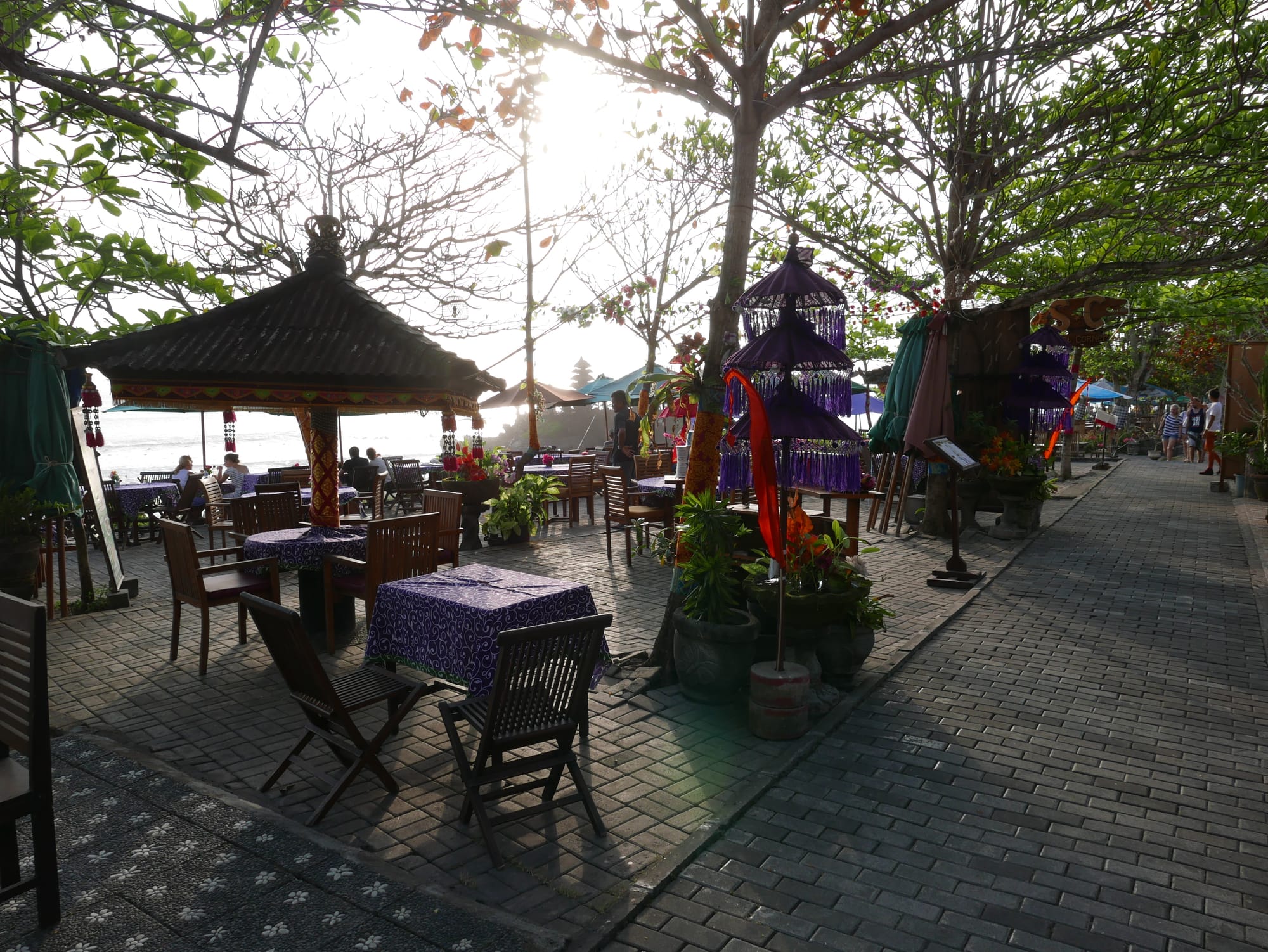
Some people celebrated the sun’s setting by making weird shapes on the beach.
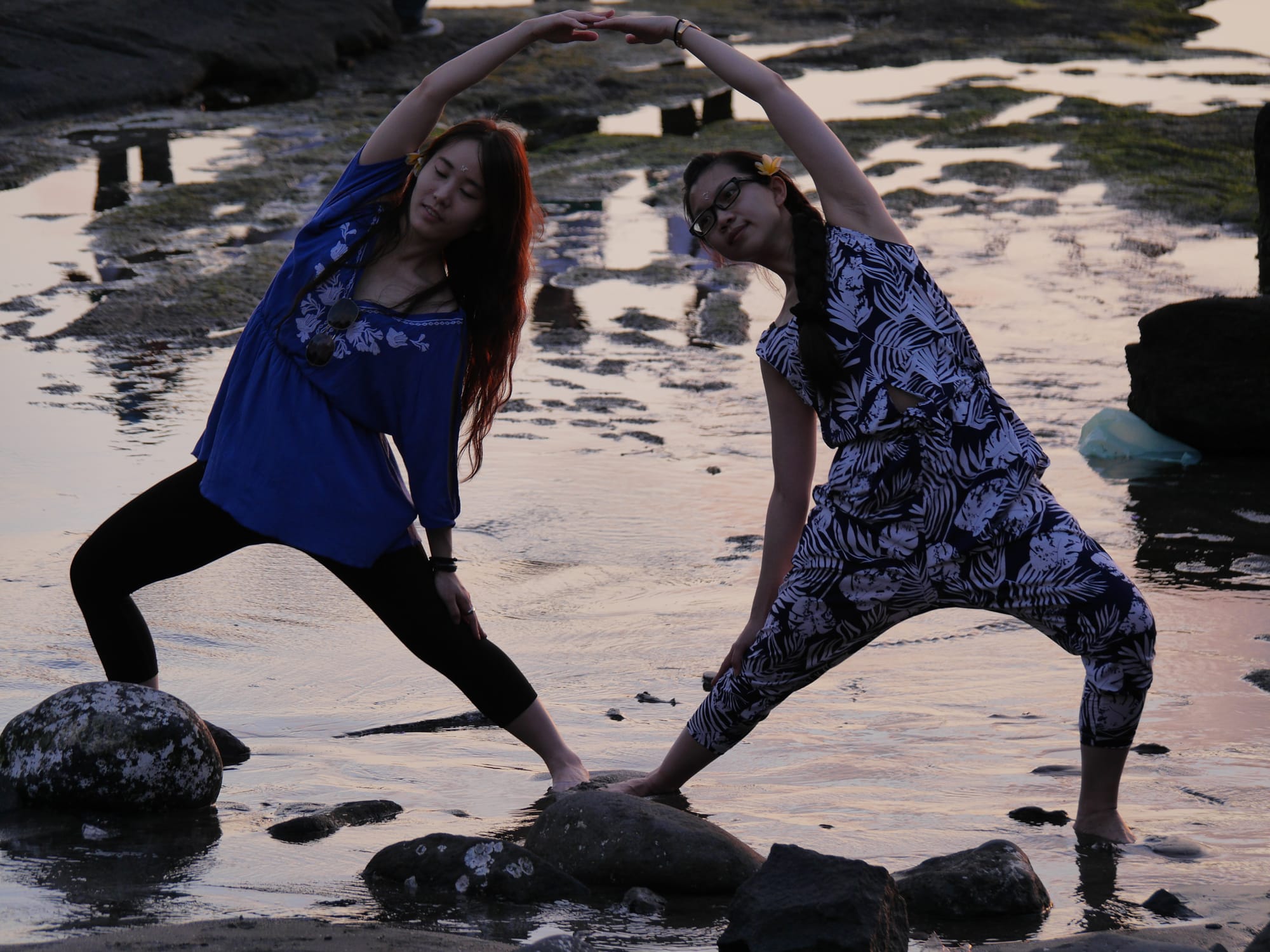
Finally, the sun started to set, throwing the coastline into some beautiful silhouettes.
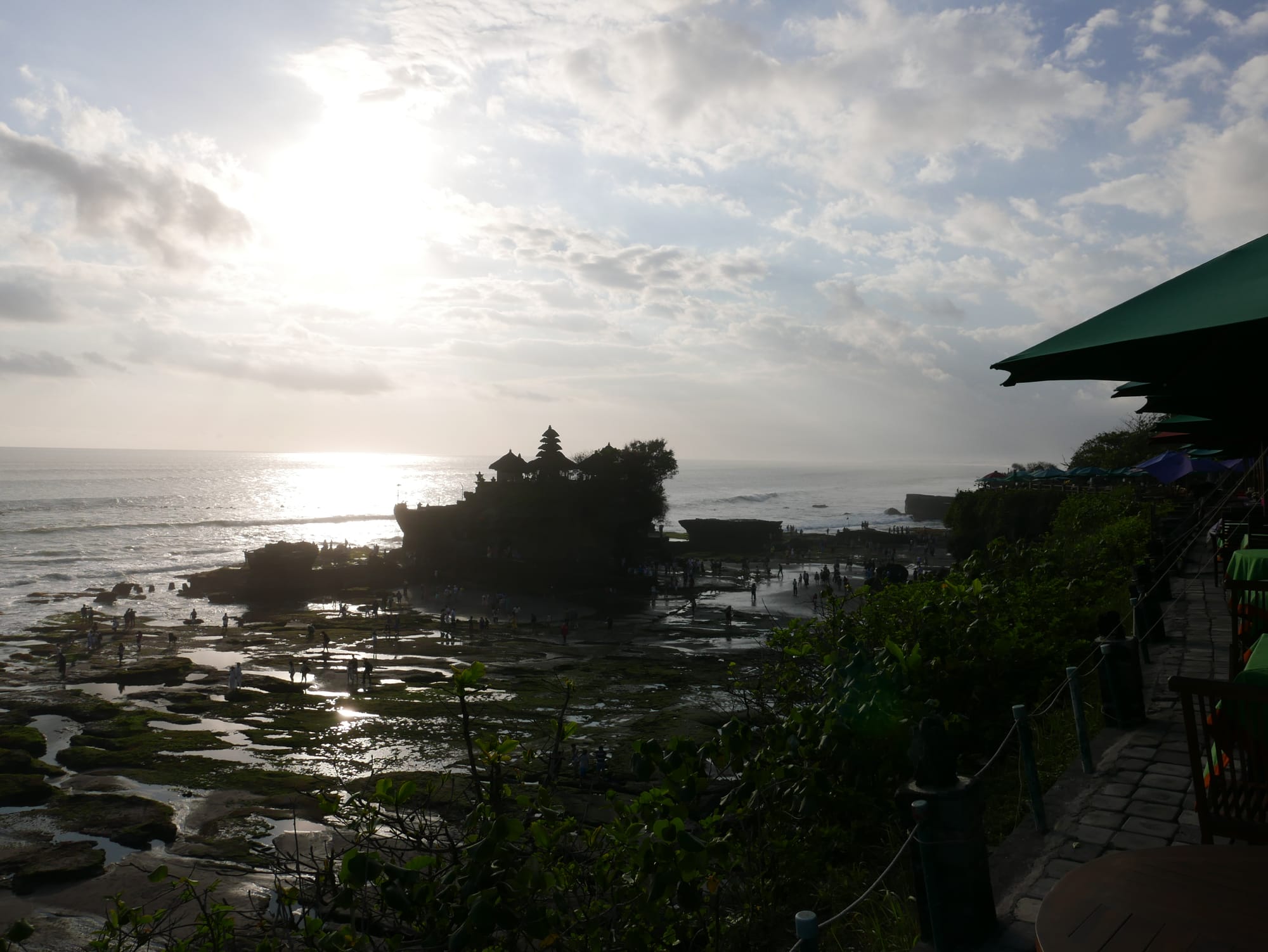
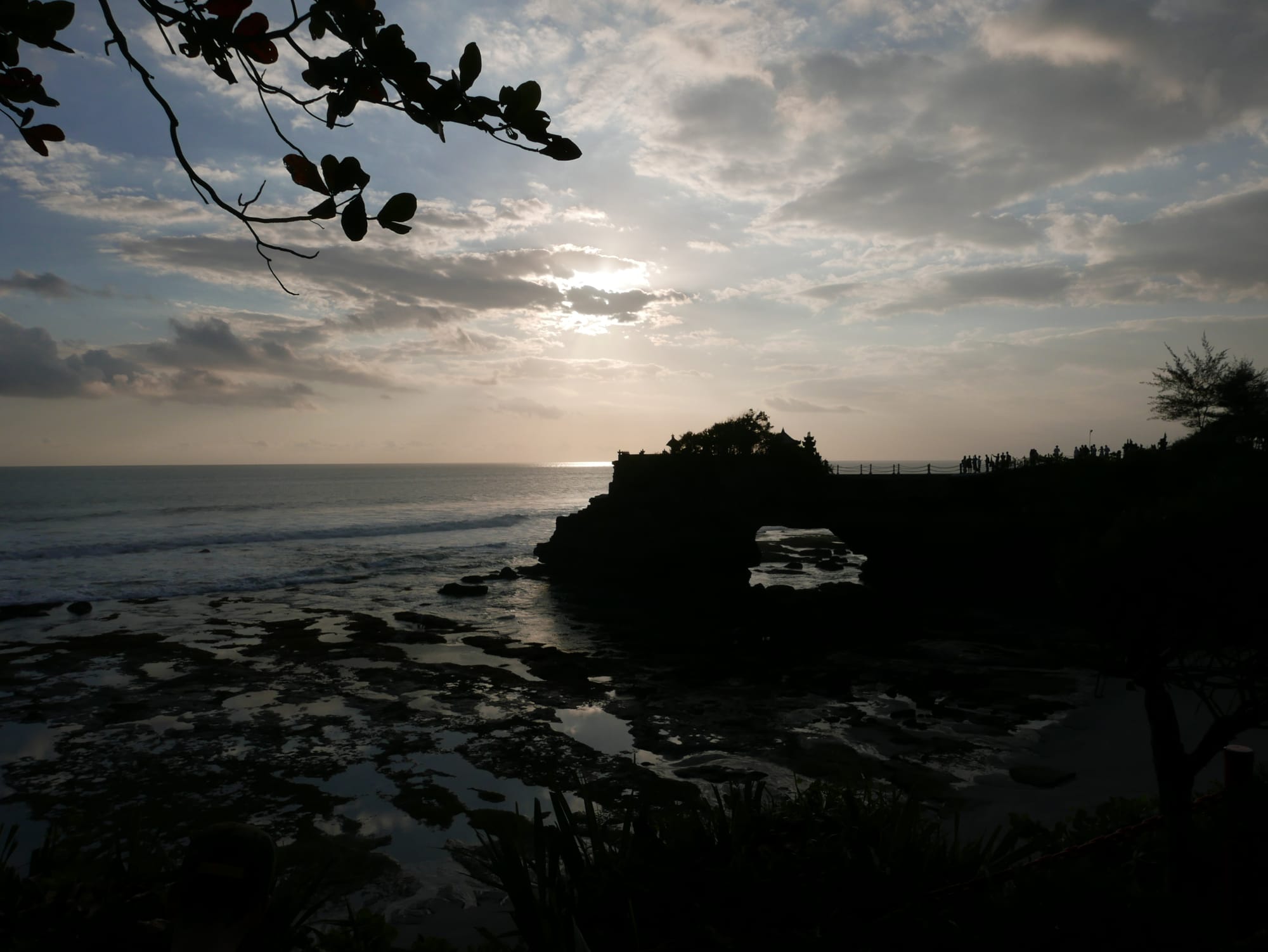
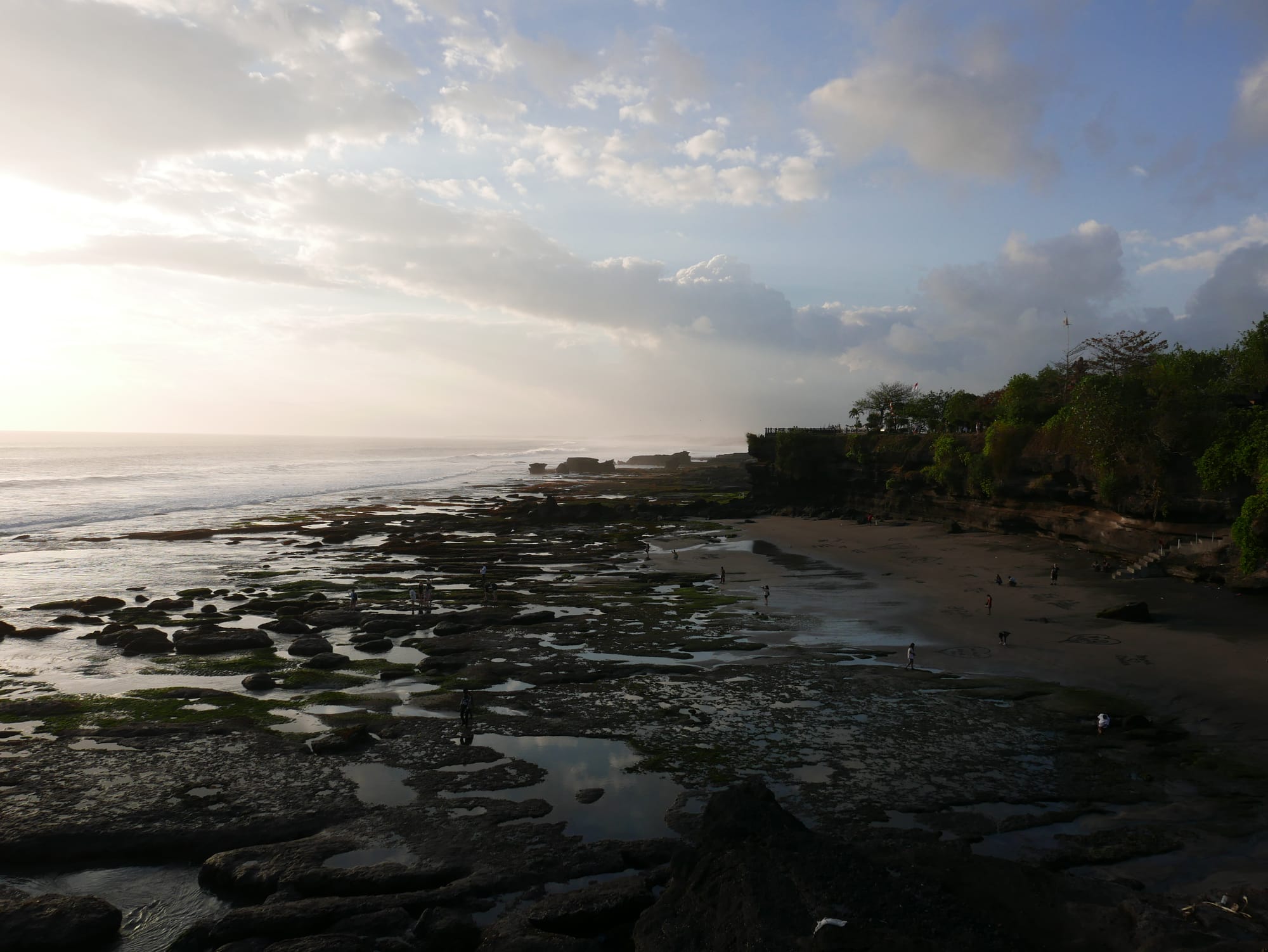
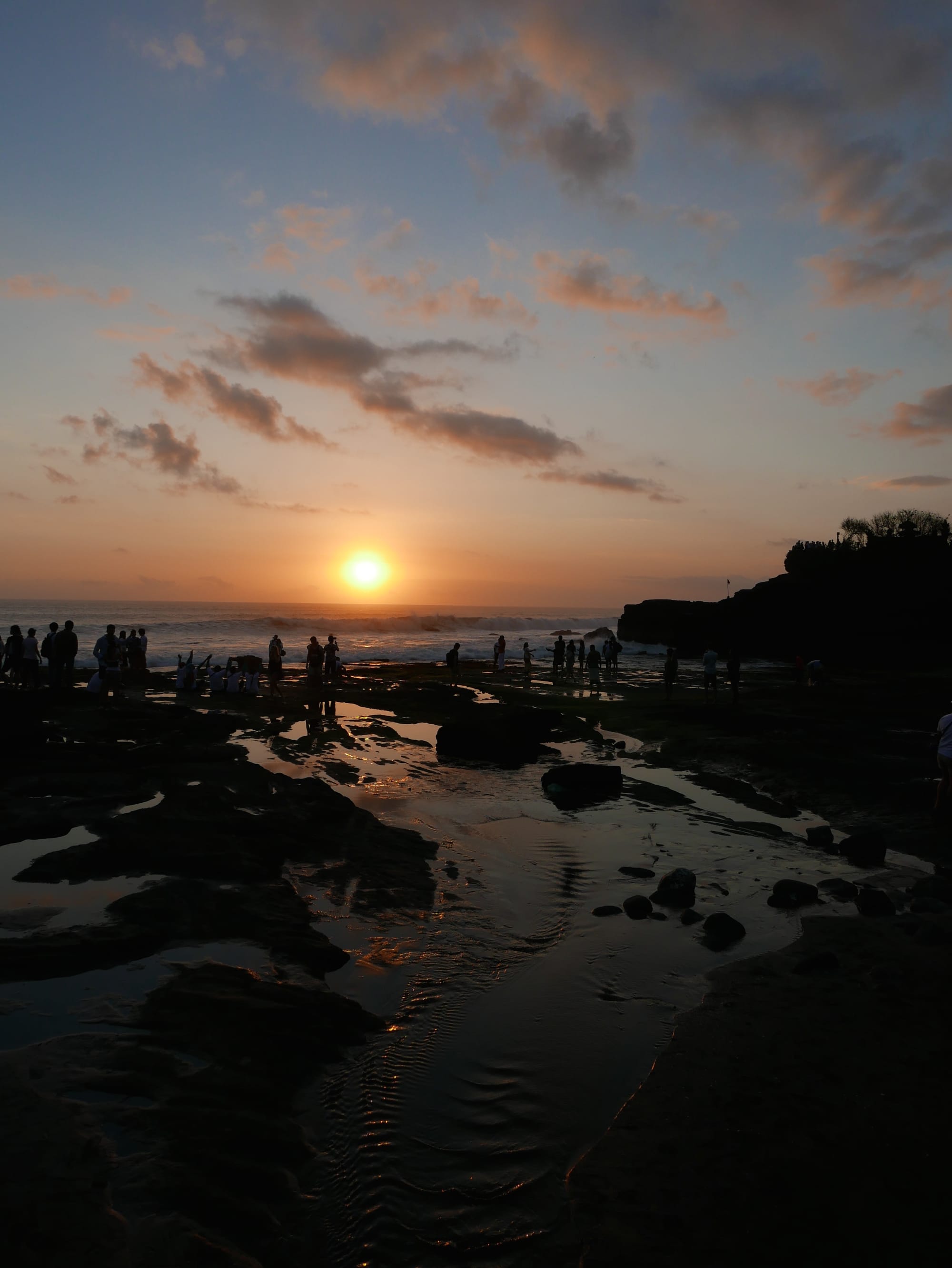
I enjoyed my visit to Tanah Lot.
The place was very crowded, but it was beautiful, and it was also a great place to watch my fellow tourists. The sunset was spectacular.
I would also have liked to see the site with the tide in. I bet there are some excellent photo opportunities for catching shots of the waves crashing against the rocky outcrop of Tanah Lot and swirling between the archway and crashing against the cliff.
A great way to finish my first full day in Bali.
FourSquare: Tanah Lot
